Green Chemistry Education in the News:
Select a Category
Reflections from the Beyond Benign Team: The Power of Green Chemistry Education in 2025
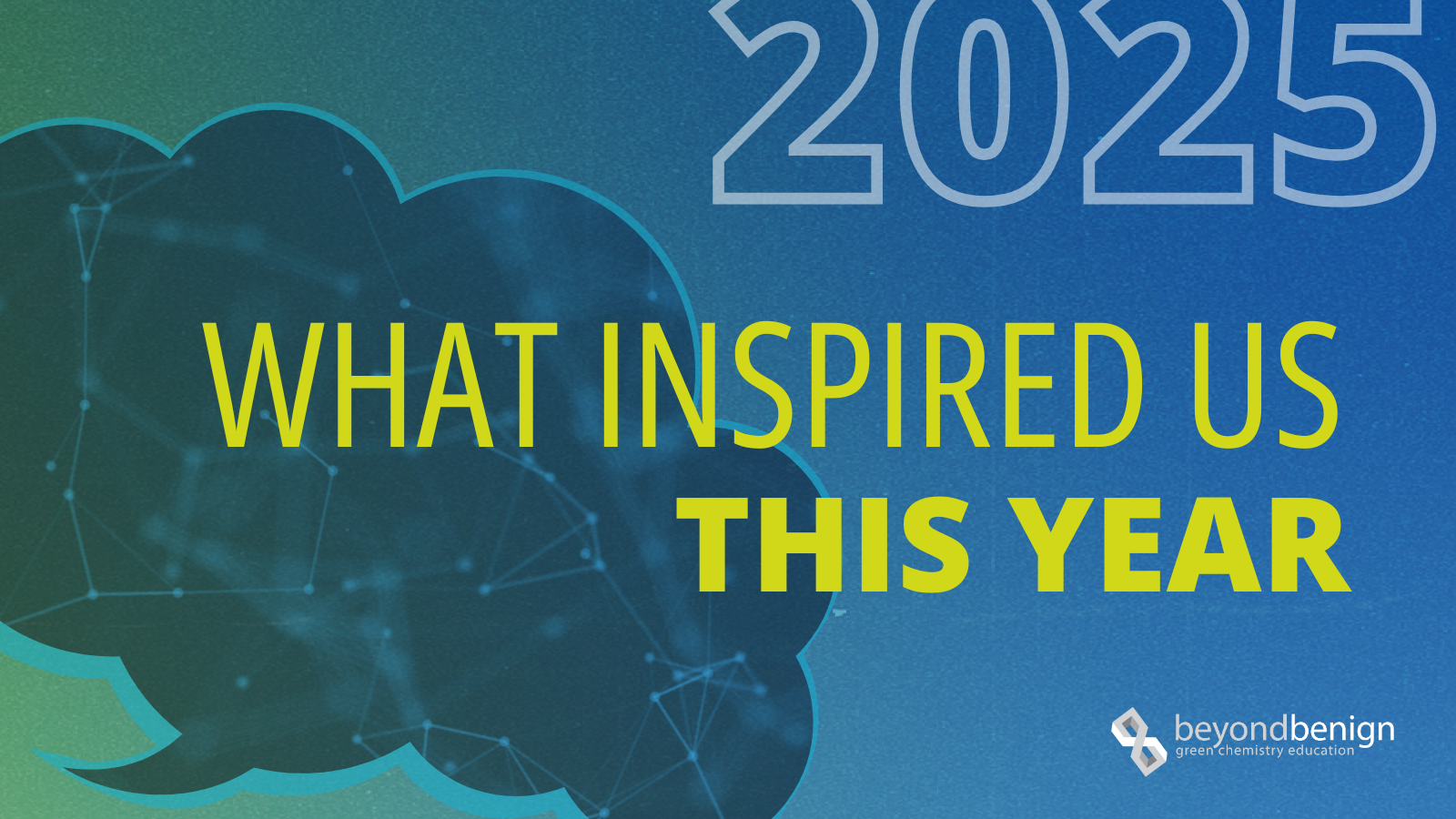 A look at the moments—from global gatherings to everyday connections—where our team felt the power and momentum of the green chemistry education community in 2025.
A look at the moments—from global gatherings to everyday connections—where our team felt the power and momentum of the green chemistry education community in 2025.
This year, we asked the Beyond Benign team to reflect on a simple question: Where did you feel the power of the green chemistry education community most strongly in 2025? Their responses span continents, classrooms, conferences, and conversations—each one offering a glimpse into the collective momentum shaping this movement.
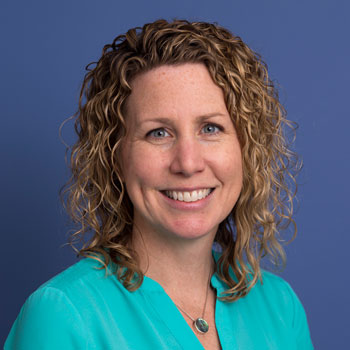
Dr. Amy Cannon
I have been fortunate to travel to several places this past year. I was truly moved by the dedication and passion I saw in places I visited across the globe. And, even though we are many miles away on opposite sides of the planet, we are all connected through the desire to make green chemistry an integral part of how we teach and practice chemistry.
In particular, I felt that sense of community during the Industrial Green Chemistry World conference in Mumbai, India, organized by the GreenChemistree Foundation. It was remarkable to hear about the research and advancements happening in India. We were able to visit two Universities (Somaiya University and St. Xavier College) while there, and the genuine passion of the faculty that I met was incredible.
Additionally, I had the opportunity to visit Chile last month, where the 2nd Green Chemistry Week and Symposium were organized at the Pontificia Universidad Católica de Chile. I was able to have lunch with a group of students from the University while there, and hearing their stories was heartwarming. A spark was lit inside them, and they would carry forward green chemistry into their future careers and various pathways.
Reflecting on these experiences, it is truly remarkable how far we have come as a global community. We are much more interconnected than we often realize. This global community is thriving and expanding rapidly, which gives me great hope.
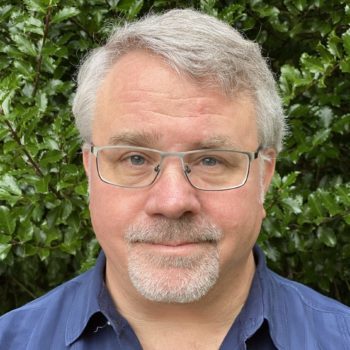
Dr. John Warner
I reviewed my activities for 2025, and I was a bit astounded by my personal activity inventory. In 2025, I gave 117 lectures (at 50 Universities, 45 conferences, and 22 companies)! 72 of these presentations were in person (20 different U.S. states and 17 different countries). I estimate that over 10,000 people listened to me this past year! While I am certainly feeling my age (kinda tired, kinda sore…), I can’t help but have an overwhelming sense of gratitude and feeling of how fortunate I am to be part of such an amazing movement and community.
Every time I speak, I can literally “feel” the magic of the look that emerges on some of the people’s faces. The impact is tangible as they not only start to understand what green chemistry is, but more importantly, begin to understand how they themselves fit into the bigger picture. Always, during every talk I give, my last slides are about the amazing people at Beyond Benign. Being an overly emotional Sicilian, more often than not, I break up a little, my eyes water, and my voice cracks as I show the pictures of the Beyond Benign team and the map of the Green Chemistry Commitment (GCC) signers.
After my talk, people come up to me. The things they say to me… sometimes they say nothing, they just look at me… and it is at that moment that I most strongly feel the power of the green chemistry education community.

Dr. Omar Villanueva
In 2025, I felt the power of the green chemistry education community most vividly during moments when collaboration translated into real movement—primarily through the Green Chemistry Commitment (GCC) network and the work leading up to the GCC Virtual Summit. Watching educators, program leaders, our Beyond Benign team, and students show up not just to attend, but to contribute, share ideas, and push forward systemic change reminded me that this community is not passive—it is active, creative, and full of collective momentum. Hearing how institutions are embedding green chemistry into courses, labs, and student experiences made it clear that this work is no longer theoretical—it’s happening. It’s spreading because people care deeply.
I also saw how our impact is expanding globally, with growing interest and great promise internationally. Through conversations with faculty and students, I learned there is a strong and urgent need for Spanish-language resources in Latin America—a gap our community is eager to fill. This was especially evident during my Spanish-language webinar for South America, which brought together 453 attendees from 32 countries. The engagement was incredible—questions, resource sharing, and immediate plans to embed green chemistry into courses—and it made the global momentum of this movement feel tangible. You could feel the spark turning into action.
It reminded me that when we create space for connection, educators show up ready to lead change across borders and classrooms. I can’t wait to see what 2026 brings and how we continue to grow, connect, and transform chemistry together.

Dr. Jonathon W. Moir
Every December, as we approach the end of another calendar year, I often find it difficult to remember everything that Beyond Benign accomplished throughout the year. Hopefully it doesn’t have to do with getting older, but I think it’s likely because, as a team, we are always so focused on what we are working on at the moment that we rarely get this chance to think back and reflect on where we’ve been and how it made us feel.
For me, there are many instances where the power of our community and of the green chemistry education movement really shone through, but they take on different forms. Throughout 2025, I saw it every week online on the Green Chemistry Teaching and Learning Community (GCTLC) platform, with over 3,000 users from more than 100 countries now registered on the site and more joining every day. We see questions being asked in the GCTLC forums and genuinely caring and thoughtful responses from our moderators and other users. We see folks introducing themselves in GCTLC group spaces and sharing helpful resources and links with each other. And we see new resources being submitted to the platform each month (unprompted) by community members from all over the world interested in sharing their lab experiments or activities or lecture content, all focused on bringing green chemistry to students. These are the kinds of things that the GCTLC platform was designed for, and it’s always so rewarding to feel that we’ve helped others, with each small change and contribution adding up to greater systemic change in the long run.
In person, the energy was palpable when speaking with our Green Chemistry Commitment (GCC) signers, students, and community members at the Canadian Chemistry Conference and Exhibition (CSC 2025) this past summer. With a newly launched Green Division at the Chemical Institute of Canada, there was a lot of excitement and buzz, with Beyond Benign and the GCC program being mentioned and featured heavily during the conference. As the Canadian chemistry community pushes for the inclusion of green chemistry in postsecondary accreditation requirements to mirror those of the U.S., the momentum is palpable. Having co-organized both a workshop and symposium, I could clearly see the enthusiasm from students and faculty alike. So many opportunities to connect, so many ways to do more. I think it’s just a matter of time before we see a complete and total shift in how chemistry is taught across the world.
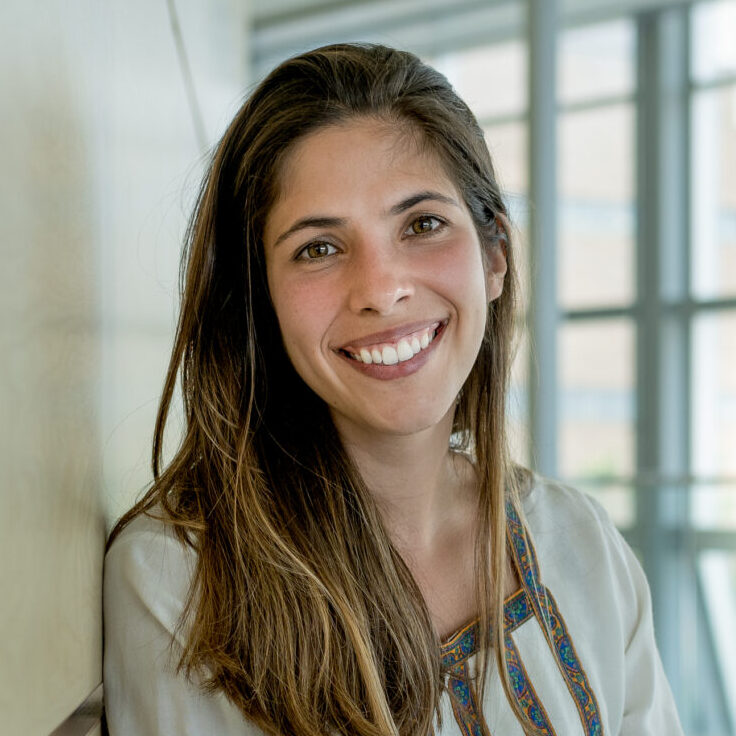
Dr. Juliana Vidal
For me, 2025 was a challenging year. With so much happening in the world and in my own personal life, there were moments when pushing for change in the status quo felt heavier than usual. However, every time I connected with the Green Chemistry Commitment (GCC) community, I felt my energy coming back. Seeing this community grow and thrive (we’ve had 50 new institutions join the program in 2025, which is now in more than 35 countries), feeling their enthusiasm in person and seeing their work in both virtual and in-person conferences brought back my own resilience.
The GCC Ambassador program and the Green Chemistry Connections webinar series remained my favorite initiatives, and I feel so privileged to collaborate with these incredible faculty members and students to keep promoting green chemistry and witness their impact around the world—one person’s green chemistry journey becoming another’s, and individual passion driving systemic transformation.
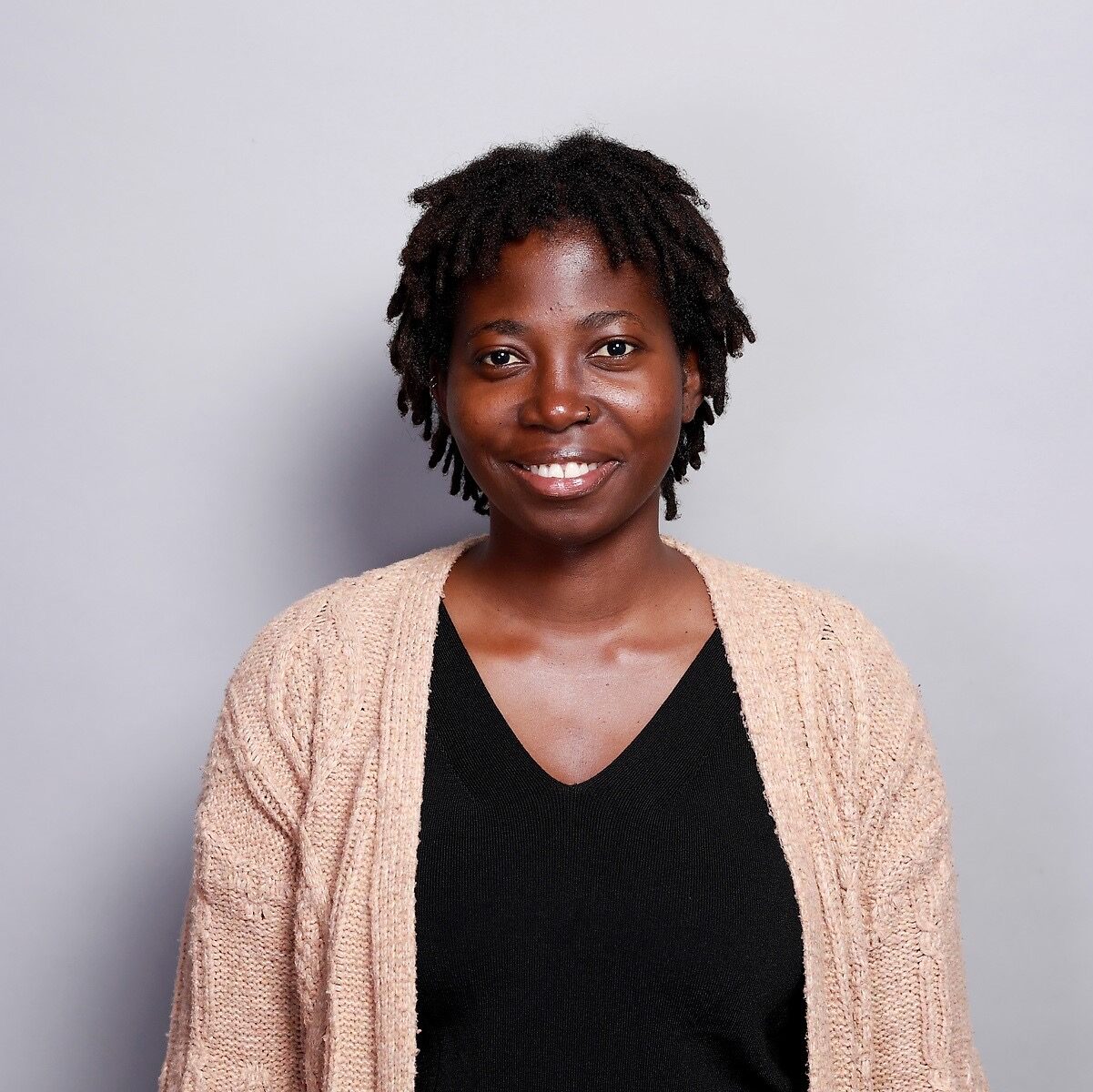
Dr. Monica Soma Hensley
Attending and seeing the engagement of the Green Chemistry Commitment (GCC) community during the in-person 2025 GCC Summit was a highlight for me this year. I also enjoyed collaborating with passionate faculty on the Case Study Template and the Soy Chemistry Curriculum projects.
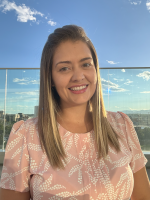
Michelle Duarte
I felt the power of the green chemistry education community when I participated in the Green Chemistry Connections webinar. It was incredible to see people connecting, exchanging ideas and experiences, and uniting for a better future.
In addition, it is inspiring to see how institutions are committed to promoting and raising awareness within their community about the importance of green chemistry, through events and updating their curricula to introduce these concepts in classrooms and laboratories.
The highlight of my year was the opportunity to join the Beyond Benign team, where I will have the chance to contribute to further expanding the reach of green chemistry education and supporting the growth of this community.

Tyler Schisler
This year, I experienced the strength of the green chemistry Education community every day through my work on the Green Chemistry Teaching & Learning Community (GCTLC). From community members submitting new learning objects for educators to integrate into their curricula to like-minded individuals supporting one another in our forum spaces, the impact of our community was evident everywhere.
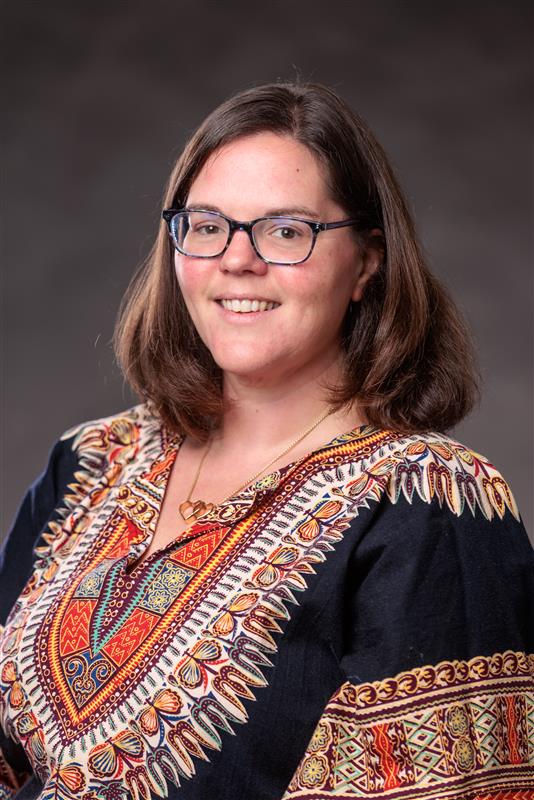
Dr. Sarah Kennedy
Every time I see a new learning object submitted to the Green Chemistry Teaching & Learning Community (GCTLC), I get excited about the power of this community! When our community comes together to share ideas for classes, lab experiments, and research, we are helping each other adopt and implement tangible ways that we can do chemistry better. It is the power of this community that will transform the new generation of scientists and put green chemistry at the forefront of all chemical endeavors. I am so lucky to be part of the amazing GCTLC and Beyond Benign teams!

Dr. Alisha Szozda
This year, I felt the power of the green chemistry education community most strongly when attending the green chemistry symposium talks and presenting a workshop on getting green chemistry into your research at the Canadian Society of Chemistry Conference this summer! It is incredible to see all the amazing work that is being done in the community. I also got to meet so many cool people when attending the ACS GCI Green Chemistry Summer School this summer! It was so motivating and inspiring to meet a group of young researchers and educators so passionate about green chemistry!
How You Can Get Involved:
- Stay connected with green chemistry education: Subscribe to the Beyond Benign newsletter to receive periodic updates with green chemistry news, educator stories, helpful resources, and upcoming events tailored to your interests.
- Join the Green Chemistry Teaching and Learning Community (GCTLC): Connect with thousands of educators, students, and professionals working to transform chemistry education. The GCTLC offers networking, mentorship, resource sharing, and a supportive space grounded in shared values and a vision for systemic change.
- Learn how your institution can get involved in the Green Chemistry Commitment (GCC): The GCC provides a flexible framework to help higher education institutions integrate green chemistry into teaching and research while connecting to a global community of peers. Discover why more than 100 institutions have joined—and how yours can too.

Reflections from the Beyond Benign Team: The Power of Green Chemistry Education in 2025
December 15, 2025
A look at the moments—from global gatherings to everyday connections—where our team felt the power and momentum of the green chemistry education community in 2025. This year, we asked the […]
Categories:
Empowering Educators: New Case Study Template Bridges Chemistry and Real-World Relevance
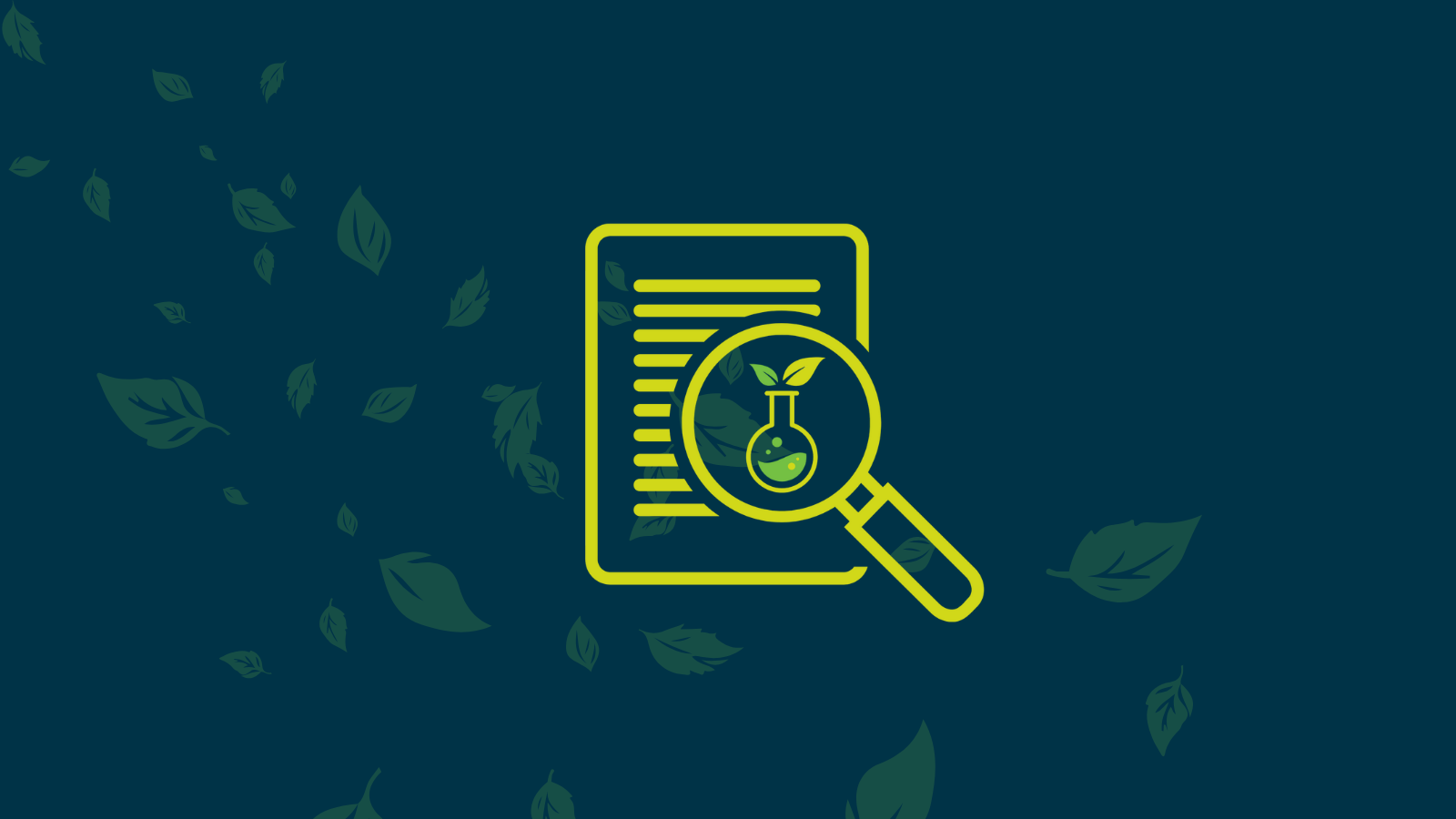 In 2023, the American Chemical Society (ACS) updated its Guidelines for Bachelor’s Degree Programs to formally integrate the tenets of green chemistry into its approval process for chemistry curricula. A key change was expanding the expectation that programs incorporate case studies that connect chemistry to real-world decision-making, including environmental impact, human health, regulation, and industry practice. It was a significant step forward for embedding sustainability into chemistry education—one that aligns closely with Beyond Benign’s mission to equip educators with the tools and support they need to teach green chemistry.
In 2023, the American Chemical Society (ACS) updated its Guidelines for Bachelor’s Degree Programs to formally integrate the tenets of green chemistry into its approval process for chemistry curricula. A key change was expanding the expectation that programs incorporate case studies that connect chemistry to real-world decision-making, including environmental impact, human health, regulation, and industry practice. It was a significant step forward for embedding sustainability into chemistry education—one that aligns closely with Beyond Benign’s mission to equip educators with the tools and support they need to teach green chemistry.
As Dr. David Laviska, Portfolio Manager for Green Chemistry & Sustainability in Education at the ACS Green Chemistry Institute (ACS GCI), explains, “The ACS Guidelines make it clear that students need relevant, digestible examples drawn from the global chemistry enterprise. Providing context for chemical principles that emphasizes relevance and value to society helps students stay engaged with the learning process.”
Recognizing that educators would need practical tools to meet these new expectations, Beyond Benign partnered with ACS GCI to co-develop a template for creating case studies suitable for classroom teaching. Created by a team of experienced faculty collaborators, the template provides a flexible, classroom-ready framework that enables educators to create and share meaningful case studies grounded in green chemistry and sustainability, advancing the ACS guidelines while accelerating both Beyond Benign’s and the ACS GCI’s efforts to transform chemistry education.
Why Case Studies Matter in Green Chemistry
For educators, case studies are one of the most effective ways to bring chemistry to life. Unlike traditional problem sets, they anchor scientific concepts in real-world decision-making—connecting chemistry to energy, medicine, agriculture, climate change, and environmental justice.
“Case studies offer context for the chemistry content students are learning, ideally allowing them to make connections between what they’re learning and real life,” said Dr. Jennifer Tripp, Assistant Professor of Chemistry at the University of San Francisco. “They can also illustrate ideas such as climate change and environmental justice that many students are already passionate about.”
For many students, case studies also change how they view chemistry itself. Instead of seeing the field only through the lens of pollution or industrial hazards, real-world examples reveal chemistry as a tool for problem-solving and sustainability.
“Hopefully, students will learn that chemists are also concerned about things they are concerned about,” Jennifer said, “and will be able to see how chemistry can be used to solve some of the world’s most pressing problems.”
Dr. Tom Umile, Associate Teaching Professor at Villanova University, has seen an overwhelmingly positive response in his classrooms. “Students absolutely love examples of how one might apply what they learn to the real world,” he said. “Historically, chemistry has had something of a bad reputation… Green chemistry case studies provide students with examples of chemistry doing something good in the world.”
By grounding learning in relevance and purpose, case studies help students see themselves as future contributors—not just observers—in science.
Origin Story: From Idea to Collaboration
The case study template began as a familiar idea with a new purpose. Both Dr. Jennifer Tripp and Dr. Tom Umile trace their green chemistry teaching roots back to working with Dr. Mike Cann, co-author of the influential Real-World Cases in Green Chemistry volumes published by the ACS GCI. For years, those books—based on innovative chemistries featured in the ACS Green Chemistry Challenge Awards—helped educators introduce sustainability concepts through real-world examples.
“I have taught out of Mike’s case study books for years, and while they tell some great success stories, they’re getting a bit dated,” Jennifer said. “A few years ago, I got in touch with Tom, and together we proposed a third volume of case studies.”
But after discussing the idea with Dr. David Laviska at ACS GCI, the vision expanded. Rather than publish more narrative-style, static case studies, they saw an opportunity to build a tool that would help many more educators create their own. “We realized that what educators might find more immediately useful is an easy-to-use tool for quickly and easily creating their own teachable case studies,” Tom said.
Based on the obvious alignment of goals between the ACS GCI and Beyond Benign, David and Dr. Amy Cannon, Co-Founder and Executive Director of Beyond Benign, decided to collaborate and co-sponsor the development of this new Case Study tool.
According to Amy, “Access to high-quality resources is traditionally a key barrier for STEM reform initiatives.” The case study template project provides an essential tool to bring green chemistry to life for students and engage them in practical learning experiences.”
For Beyond Benign, the partnership aligned with a shared goal: to scale the adoption of green chemistry by empowering educators. “Partnerships like this are necessary to elevate and expand green chemistry,” Amy added. “By working with ACS GCI and educators, we can support change across institutions and communities.”
A Practical Tool Built for Real Classrooms
The new Green Chemistry Case Study Template was built with a clear purpose: to make it easier for educators to meet the ACS approval guidelines while strengthening real-world chemistry education. Rather than starting from scratch, instructors now have a framework that guides them through selecting a topic, building narrative context, integrating core chemistry concepts, and assessing student learning.
“Teaching with case studies is not optional anymore,” said Tom Umile. “The ACS is telling us in no uncertain terms that the next generation of chemists must be exposed to case studies of effective applications of green chemistry… At some point, we’re all going to need to start making our own.”
That’s where the template offers value. It’s structured enough to simplify the process, but flexible enough to adapt to different courses and teaching styles. As David Laviska explains, “The template provides a flexible scaffold that sets a pathway with guidelines while allowing for creativity and personalization for instructors.”
Importantly, the template also encourages sharing. Educators can contribute their case studies to the Green Chemistry Teaching and Learning Community (GCTLC), helping expand access to practical, real-world teaching materials.
What Comes Next
The Green Chemistry Case Study Template is available from the Green Chemistry Teaching and Learning Community (GCTLC) and the ACS GCI, where educators can download it, adapt it to their courses, and share their own case studies with peers. Additionally, the project team has developed example case studies that demonstrate effective use of the template. These examples can serve as valuable classroom resources, helping faculty gain confidence in teaching real-world applications of green chemistry.
At its core, the template is more than a resource; it’s an invitation to collaborate. By sharing examples from different institutions, industries, and regions, educators can highlight new stories of sustainable science and expand what chemistry education looks like today.
How to Get Involved:
- If you are an educator in a higher ed setting, join a virtual workshop on February 25th, 2026, to learn how to develop your own case studies using the new Case Study Template. Facilitators Dr. Jennifer Tripp and Dr. Tom Umile will guide participants through the resources, offer practical strategies for adaptation and implementation, and create opportunities for educators to share insights. Register free here!
- Share your case studies that bring real-world examples of green chemistry, sustainability, and systems thinking into the classroom. Contribute to our special collection, “Integrating Sustainability and Green Chemistry in the Classroom,” on the Green Chemistry Teaching and Learning Community (GCTLC) platform. Learn more and submit.

Empowering Educators: New Case Study Template Bridges Chemistry and Real-World Relevance
December 11, 2025
In 2023, the American Chemical Society (ACS) updated its Guidelines for Bachelor’s Degree Programs to formally integrate the tenets of green chemistry into its approval process for chemistry curricula. A […]
Categories:
Calling People In: Michelle Ernst Modera on Building K-12 Green Chemistry Community
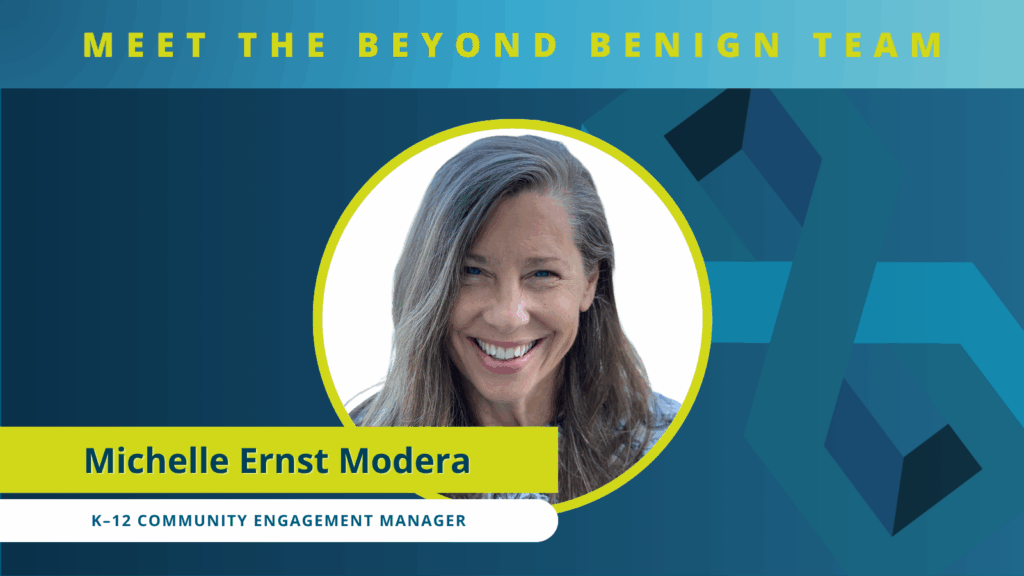 “K-12 education is where the spark happens,” says Michelle Ernst Modera, Beyond Benign’s K-12 Community Engagement Manager. “If we want to build a strong pipeline of scientists, engineers, and citizens who understand sustainability at its core, we have to begin in those early classrooms.”
“K-12 education is where the spark happens,” says Michelle Ernst Modera, Beyond Benign’s K-12 Community Engagement Manager. “If we want to build a strong pipeline of scientists, engineers, and citizens who understand sustainability at its core, we have to begin in those early classrooms.”
Michelle’s work focuses on building that foundation: connecting teachers with resources, training, and a supportive network to help them bring green chemistry to life for their students. With a background in education, sociology, and community engagement, she approaches her work through a relational lens—one shaped by her experience at the National Center for Race Amity, where she learned the power of “calling people in” to learn together.
At Beyond Benign, Michelle helps educators across the country find professional development opportunities, share ideas, and amplify the innovation already happening in classrooms. In the conversation below, she reflects on her path to Beyond Benign, the importance of community in advancing green chemistry, and why K-12 educators are such a vital part of the movement.
Why is K-12 education an important part of the larger green chemistry movement?
K-12 education is where curiosity begins. It’s where exploration and awareness start to take root, long before students ever choose a college major or a career path. If we want to build a strong pipeline of scientists, engineers, and citizens who understand sustainability at its core, we have to begin in those early classrooms.
When students learn to see chemistry as something connected to their lives and communities—something that can solve real-world problems—it changes everything. They carry that mindset into higher education and the workforce, and that’s how long-term change happens.
The challenge is that funding for K-12 programs is much harder to come by. There’s a lot of energy around green chemistry in higher education and industry, but those early opportunities for teachers and students often get overlooked. It’s frustrating because this is the foundation. Without it, we’re missing the very beginning of the story. That’s why so much of my focus is on helping people see how vital K-12 education is to the bigger picture of advancing green chemistry.
What first drew you to education and community engagement, and how did that path lead you to Beyond Benign?
I came into this work through community engagement. I returned to school to pursue my M.Ed. and accepted a fellowship with Beyond Benign. I was originally slotted to help with development, but the K-12 director and program manager moved on around the same time. I started working more closely with the Beyond Benign team, and they encouraged me to take the lead and actually run parts of the program.
What made it click was the culture here. Beyond Benign is unusually transparent and humble. I could reach out to anyone and be genuinely heard. It took me a moment to find my footing as one of the few non-chemists on the team. But my background in community engagement turned out to be very useful for the work we do: building relationships with educators, understanding their reality in the classroom, and creating spaces where people feel invited in to learn together, share their innovative approaches to teaching, and keep contributing over time.
At the heart of it, I’m driven by a love of learning, collaboration, and innovation, and this role lets me use everything I’ve done before while still learning continually in a new field.
You previously worked with the National Center for Race Amity. How does that ‘call people in’ approach shape your work with educators?
Working at the National Center for Race Amity (NCRA) shaped a great deal of how I think about community engagement. The organization taught me the importance of accompaniment—walking alongside people who are learning and taking action and learning with them. What made NCRA unique was its commitment to calling people in instead of calling them out. We created spaces where participants could explore difficult topics like race and equity, make mistakes, adjust, and move forward without fear of public shaming, even as we cultivated a culture of respect and accountability.
That experience directly informs how I approach educators in the green chemistry space. Teaching and learning are both deeply human processes. People need space to experiment, reflect, and grow, especially when they’re integrating new ideas like sustainability and systems thinking into their classrooms. The “call people in” mindset helps create that kind of trust-based community—one where everyone feels safe to learn from wherever they are and contribute what they know.
As K-12 Community Engagement Manager, what are your priorities, and what excites you about this educator community?
My biggest focus is on connection—helping teachers find the professional development, resources, and peer networks that make it easier to bring green chemistry into their classrooms. A lot of my work centers on linking educators to Beyond Benign’s professional development opportunities, amplifying the work of teachers who are already leading in this space, and encouraging them to share their knowledge through conferences, presentations, and collaborations.
What excites me most is seeing the creativity and commitment of K-12 educators. They’re constantly innovating to connect students to sustainable science practices and to reflect on challenges in the world around them through that lens., whether it’s through environmental projects, safer lab practices, or student-led problem-solving. There’s so much brilliance and care in this community, and being able to build spaces where that knowledge and connection can grow and ripple outward is what drives me every day.
Why is community engagement essential for advancing green chemistry in K-12?
Community engagement is really the engine that keeps green chemistry moving forward. Without it, so much of the innovation and learning that happens would stay siloed or locked behind paywalls. When teachers connect with one another—and with colleagues in higher education, industry, and even state agencies—their understanding deepens, and new possibilities open up for sharing that wealth of knowledge.
Green chemistry isn’t something that advances in isolation; it evolves through shared ideas, tested approaches, and collective problem-solving. Each educator brings a different perspective shaped by their students, their classrooms, and their communities. When we create spaces for those perspectives to meet, everyone gains clarity about what we’re doing and why it matters. Simply put, the community makes the movement stronger.
What current projects are you most excited to share?
Right now, I’m most excited about two projects that are helping us rebuild and expand our K-12 green chemistry network.
For New York educators, we’re relaunching the New York Green Chemistry Professional Learning Team (NYGCPLT). This initiative had existed previously but paused when a key partner organization shifted. We’ve been able to bring it back, complete with the ability to offer professional learning credits for teachers. It’s a way for our NYS science teachers to learn how to green labs together and implement them with the support of their peers, creating a strong, supportive network of educators who can inspire one another and help green chemistry take deeper root in labs and classrooms.
For educators everywhere, I’m excited about Beyond Benign’s Online Courses. These are professional development opportunities led by experienced teachers who have real expertise in greening labs and meeting NGSS standards. They’re designed to be practical, accessible, and immediately applicable—and New York State teachers can even take them for free.
For educators new to green chemistry, what are the first steps to take?
Any advice I would share comes straight from the educators in our programs: start small. You don’t have to overhaul your entire curriculum all at once. Try greening one or two lessons or labs to begin with, or look for simple chemical substitutions that make your classroom safer.
From there, take advantage of the incredible free resources that already exist. Start with the community recommended K-12 Favorite Resources collection. Then explore Beyond Benign’s website and the Green Chemistry Teaching and Learning Community (GCTLC) which are full of practical examples, lesson plans, and active forums where teachers share advice and solutions. If you find yourself needing some accompaniment, join a forum or group on the GCTLC, or sign up for one of our online courses.
Lightning Round!
First STEM memory:
Definitely biology. I loved being in the greenhouse during lab. There was something magical about tending to plants and watching science happen right in front of me. As a kid, I was always the one ‘playing scientist,’ exploring outside with a magnifying glass. If I’d had a real chemistry set, I probably would’ve been trouble, but it turns out I was sort of a green chemist: exploring the cupboards, pretending to be in a lab, and mixing all kinds of ingredients, hoping to find something that would create an interesting reaction. I clearly needed some accompaniment because all I created were some stinky and colorful concoctions.
Outside of work:
I’m still very community-oriented. I love working with people of all ages, especially around spiritual and material education and building connections. For fun, I spend time doing watercolor and photography. I’m not a professional by any means, but I love the creativity and mindfulness it brings.
Currently reading:
The Flavia de Luce mystery series by Alan Bradley. The main character is this precocious 11-year-old who uses chemistry to solve murders. It’s such a fun mix of curiosity, science, and mischief.
How You Can Get Involved:
- Sign up for Green Sparks, a free six-part email series designed to make bringing sustainability into your classroom easier than ever.
- Middle school and high school teachers: Enroll in a professional development course to learn how to transform your teaching practices and inspire students to critically engage with environmental and sustainability challenges. Read what previous participants said about the courses here.
- New York-based teachers in grades 6-12: Join the New York Green Chemistry Professional Learning Team, a dedicated space where you can connect with your peers and develop your understanding and practice of green chemistry and sustainable science in your labs.
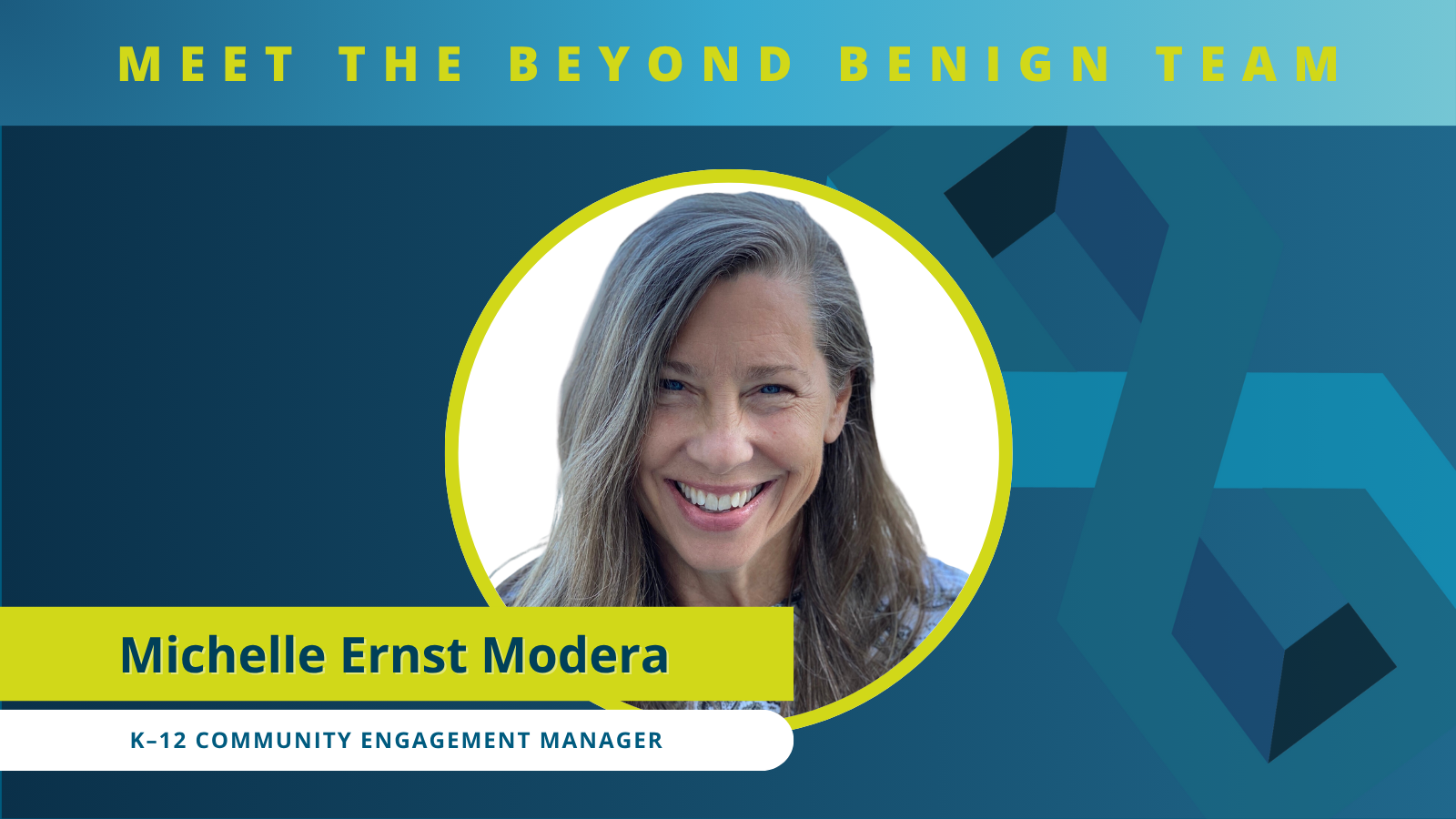
Calling People In: Michelle Ernst Modera on Building K-12 Green Chemistry Community
November 17, 2025
“K-12 education is where the spark happens,” says Michelle Ernst Modera, Beyond Benign’s K-12 Community Engagement Manager. “If we want to build a strong pipeline of scientists, engineers, and citizens […]
Categories:
Beyond Benign Awarded $1.83M National Science Foundation Grant to Launch Green Chemistry Professional Mentoring Networks
 Beyond Benign has been awarded a five-year, $1.83 million grant from the National Science Foundation (NSF) Division of Undergraduate Education (IUSE Program). The funding will support the launch of the Green Chemistry Professional Mentoring Networks (PMNs) — a national initiative designed to help undergraduate chemistry educators integrate safer, more sustainable practices into their teaching.
Beyond Benign has been awarded a five-year, $1.83 million grant from the National Science Foundation (NSF) Division of Undergraduate Education (IUSE Program). The funding will support the launch of the Green Chemistry Professional Mentoring Networks (PMNs) — a national initiative designed to help undergraduate chemistry educators integrate safer, more sustainable practices into their teaching.
Led by Dr. Amy Cannon, Co-Founder and Executive Director of Beyond Benign, with Co-Principal Investigators Dr. Jonathon Moir and Dr. Nikita Burrows of Monmouth University, the project will establish a network-based professional development model reaching educators across the country.
A National Framework to Strengthen Green Chemistry Education
Over the next five years, Beyond Benign will develop and lead 16 Professional Mentoring Networks, engaging approximately 160 faculty members, postdoctoral fellows, and instructors from a diverse range of U.S. higher-education institutions, including primarily undergraduate institutions and two-year colleges. Each network will focus on one of the four learning objectives of the Green Chemistry Commitment:
-
Theory: Understanding the Twelve Principles of Green Chemistry
-
Toxicology: Evaluating molecular hazards and human and environmental health impacts
-
Laboratory Skills: Designing and analyzing greener chemical processes and materials
-
Application: Integrating sustainable chemistry into real-world and industrial contexts
Participants will meet virtually every two weeks during an academic term and participate in two summer learning summits (one virtual and one in-person) to deepen collaboration, share challenges, and develop actionable teaching practices. Networks will be co-led by experienced faculty mentors who guide community-building, curriculum redesign, and implementation throughout the year.
The project also provides funding for curriculum materials development, participant travel, and conference engagement for PMN leaders.
The NSF award comes at a pivotal moment: Green chemistry is becoming a core expectation in the American Chemical Society’s updated accreditation guidelines. As undergraduate programs adapt, the need for robust educator support — particularly around curriculum redesign and faculty training — has never been greater.
Beyond Benign will also lead an educational research study examining how mentoring networks influence faculty behavior, curriculum transformation, and departmental culture change. Using surveys, reflective journals, interviews, and field observations, the research team will evaluate how educators become long-term leaders in green chemistry at their institutions.
Findings will be shared through publications, conferences, and Beyond Benign’s Green Chemistry Teaching and Learning Community (GCTLC) platform, strengthening knowledge-sharing and expanding access to best practices across the field.
With this NSF investment, Beyond Benign deepens its leadership in building a more sustainable, safe, and workforce-ready future for chemistry education. The Green Chemistry Professional Mentoring Networks will expand opportunities for faculty nationwide to grow their expertise, strengthen departmental programs, and prepare students to design chemical products and processes that are safer for people and the planet.

Beyond Benign Awarded $1.83M National Science Foundation Grant to Launch Green Chemistry Professional Mentoring Networks
November 17, 2025
Beyond Benign has been awarded a five-year, $1.83 million grant from the National Science Foundation (NSF) Division of Undergraduate Education (IUSE Program). The funding will support the launch of the […]
Categories:
Renewable Feedstocks in Action: Bringing Soy-Based Chemistry to Undergraduate Classrooms
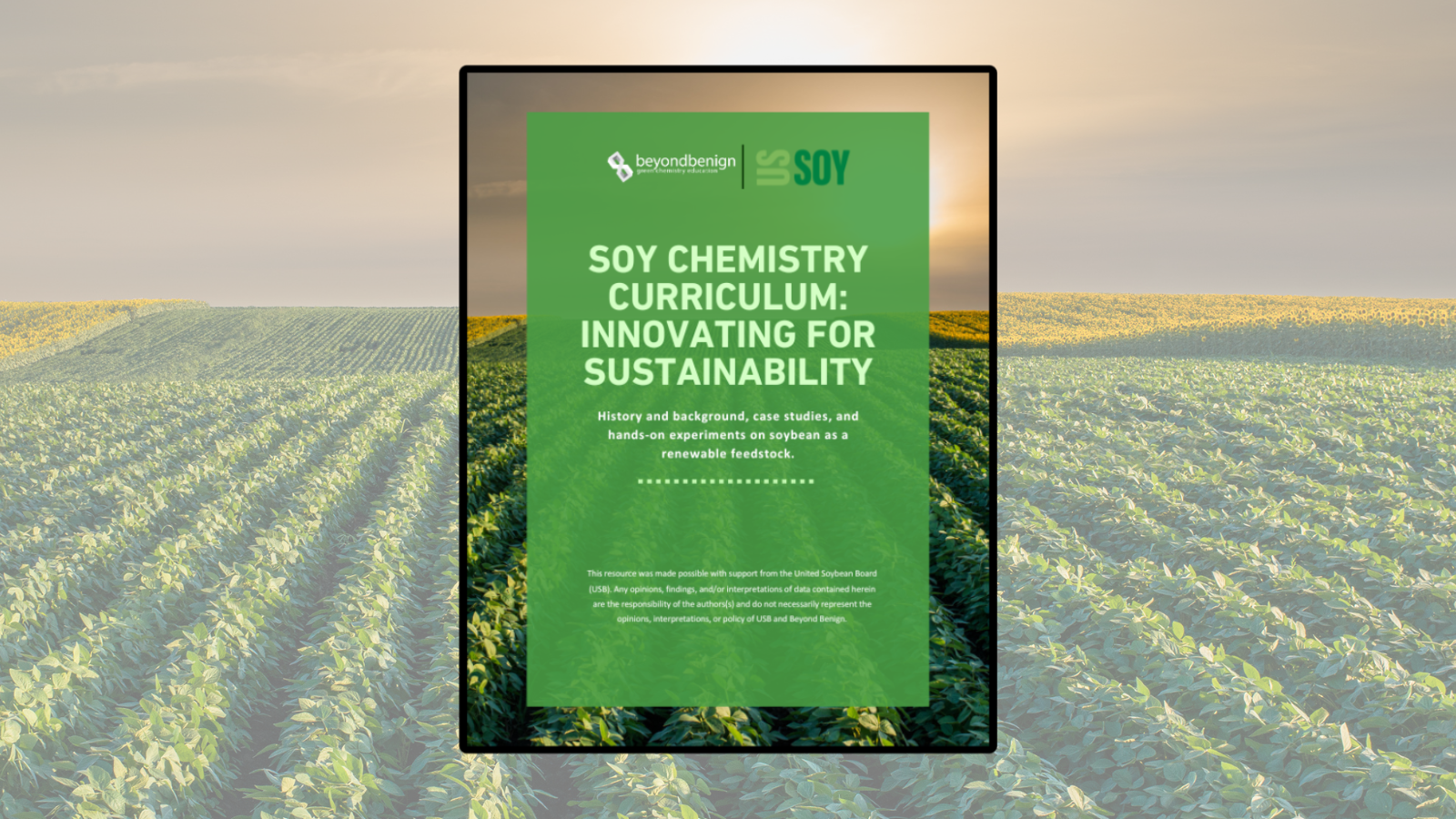 Today’s students want their science to matter. They want to see the role chemistry (and green chemistry) can play in addressing sustainability challenges such as climate change, rural economies, and protecting human and environmental health. The new Soy Chemistry Curriculum, created by Beyond Benign in collaboration with educators and industry experts from Omni Tech International and supported by the United Soybean Board (USB), gives them that opportunity.
Today’s students want their science to matter. They want to see the role chemistry (and green chemistry) can play in addressing sustainability challenges such as climate change, rural economies, and protecting human and environmental health. The new Soy Chemistry Curriculum, created by Beyond Benign in collaboration with educators and industry experts from Omni Tech International and supported by the United Soybean Board (USB), gives them that opportunity.
This three-module undergraduate curriculum uses soy—one of the world’s most abundant renewable crops—as a lens for teaching green chemistry and sustainability. Through lecture content, industry case studies, and lab experiments, it connects core chemistry concepts to material innovation in a way that feels real and relevant.
As Kris Weigal of Omni Tech International explains, “Soy chemistry offers a tangible example of how renewable resources can be used to create safer, more sustainable products. It’s a gateway for students to understand the broader field of bio-based chemistry, which is essential as we transition away from petroleum-derived materials.”
Connecting Agriculture and Chemistry
Renewable feedstocks are reshaping what’s possible in both research and the classroom. Soy, in particular, offers a powerful entry point: it’s abundant, versatile, and deeply tied to real economies and communities.
For the educators who helped build the Soy Chemistry Curriculum, that connection is more than academic. Curriculum co-author Jane Wissinger’s perspective is shaped by both science and agriculture. Her family’s farmland in South Dakota keeps her close to the realities of planting, harvesting, and markets, while her early work as a crop herbicide chemist deepened her understanding of the chemistry that supports farmers and renewable crops like soy. Michael Wentzel grew up in rural Iowa and sees soy as a way to connect chemistry to everyday life and regional industries. During his postdoctoral work in Kansas, Julian Silverman saw how farmers themselves were eager to collaborate on new innovations using soy-based materials.
Their combined insight illustrates how soy serves as an effective context-based teaching tool. It links chemistry to real materials and real people, showing students the connection between agricultural resources, product development, and sustainable design. In the classroom, soybeans become more than a feedstock—they become a window into renewable materials science and systems thinking.
Inside the Soy Chemistry Curriculum
The Soy Chemistry Curriculum offers a flexible way for undergraduate instructors to integrate green chemistry into both lecture and laboratory settings. Its three modules can be used as a full sequence or adapted individually.
- Module I introduces soy as a renewable feedstock, exploring its history and background as well as how the molecular structure of extracted soybean oil and soybean meal influences their properties and applications.
- Module II uses industry case studies to show how soy-based chemistry is replacing petroleum-derived materials in adhesives, surfactants, coatings, and other products. It also introduces Life Cycle Assessment (LCA) and Techno-Economic Analysis (TEA) to help students evaluate environmental and economic tradeoffs.
- Module III brings concepts to life in the lab. Students convert soybean oil into functional materials using greener synthesis methods, applying the Twelve Principles of Green Chemistry while analyzing performance and safety.
For Dr. Jane Wissinger, the curriculum’s power lies in its relevance. “There is an abundance of interesting content related to the chemistry of soybean components and a wide variety of applications familiar to students in everyday life,” she said. “By moving from foundational chemistry to real industrial case studies, the curriculum shows how renewable, potentially biodegradable, and nontoxic materials can replace fossil fuel–based chemicals that are depleting, non-degradable, and often toxic.”
A Collaboration Between Academia and Industry
Developed through a partnership between educators in Beyond Benign’s Green Chemistry Commitment (GCC) program and industry professionals at Omni Tech International, the Soy Chemistry Curriculum was designed to prepare students for applied chemistry careers.
Kris Weigal of Omni Tech International said the collaboration ensured that students can see how chemistry translates beyond the classroom. “My role involved distilling complex real-world industrial processes and product development pathways into accessible, engaging educational content,” she said. “By presenting industry challenges and innovations in a relatable way, we aimed to spark curiosity and critical thinking among students.”
For Dr. Julian Silverman, collaboration also expands what chemistry can mean across disciplines. “Working at a fashion school, my students are interested in using sustainable materials to tackle issues like fast fashion,” he said. “By collaborating with experts across the green chemistry community, I can bring scientific innovation to a broader audience — the artists and designers who make our clothes, cosmetics, and more.”
He also sees value in how the curriculum introduces students to real-world decision-making. “In addition to formulating new materials, it’s important to evaluate their commercial feasibility,” he said. “Using green chemistry metrics with economic metrics is a powerful way to show students that sustainability has to work in both science and the real world.”
Together, these perspectives ground the curriculum in applied learning, showing students how chemistry drives innovation in agriculture, product design, manufacturing, and sustainable materials development.
Advancing Green Chemistry Education
The Soy Chemistry Curriculum is part of a wider effort to transform chemistry education. Each module is grounded in the Twelve Principles of Green Chemistry, giving educators practical tools to teach safer chemical design, waste minimization, and responsible material selection. The curriculum also aligns with the United Nations Sustainable Development Goals (UN SDGs).
For Amy Cannon, Executive Director and Co-Founder of Beyond Benign, this kind of resource reflects a growing shift in science education. “This curriculum gives educators a way to connect core scientific concepts with real-world decision-making around sustainability,” she said. “When students learn to design chemistry with health, safety, and environmental impact in mind, they are better equipped to lead in any field of science.”
By publishing the curriculum on the Green Chemistry Teaching and Learning Community (GCTLC) platform, Beyond Benign ensures that it is freely available to educators worldwide. Instructors can access ready-to-use teaching materials, assessments, and instructor notes, while those seeking deeper engagement can participate in the Green Chemistry Commitment (GCC) program for professional development and peer collaboration.
Looking Ahead
The Soy Chemistry Curriculum is more than a teaching resource—it expands what chemistry education can do. By grounding learning in real materials, real industries, and real environmental challenges, it gives students the tools to think critically and design more sustainable solutions.
As Dr. Michael Wentzel reflected, “I hope folks realize that chemists are creative and able to use different resources for the applications required. The ability to modify soybean oil, especially, provides enormous potential.” That potential now lives in classrooms and labs, shaping the next generation of scientists.
The full Soy Chemistry Curriculum is freely available on the Green Chemistry Teaching and Learning Community (GCTLC) platform, along with teaching tools and educator support from Beyond Benign.

Renewable Feedstocks in Action: Bringing Soy-Based Chemistry to Undergraduate Classrooms
October 28, 2025
Today’s students want their science to matter. They want to see the role chemistry (and green chemistry) can play in addressing sustainability challenges such as climate change, rural economies, and […]
Categories:
Inside the Classroom: Two Educators on the Value of Teaching Green Chemistry to High School Students and Their Teaching Communities
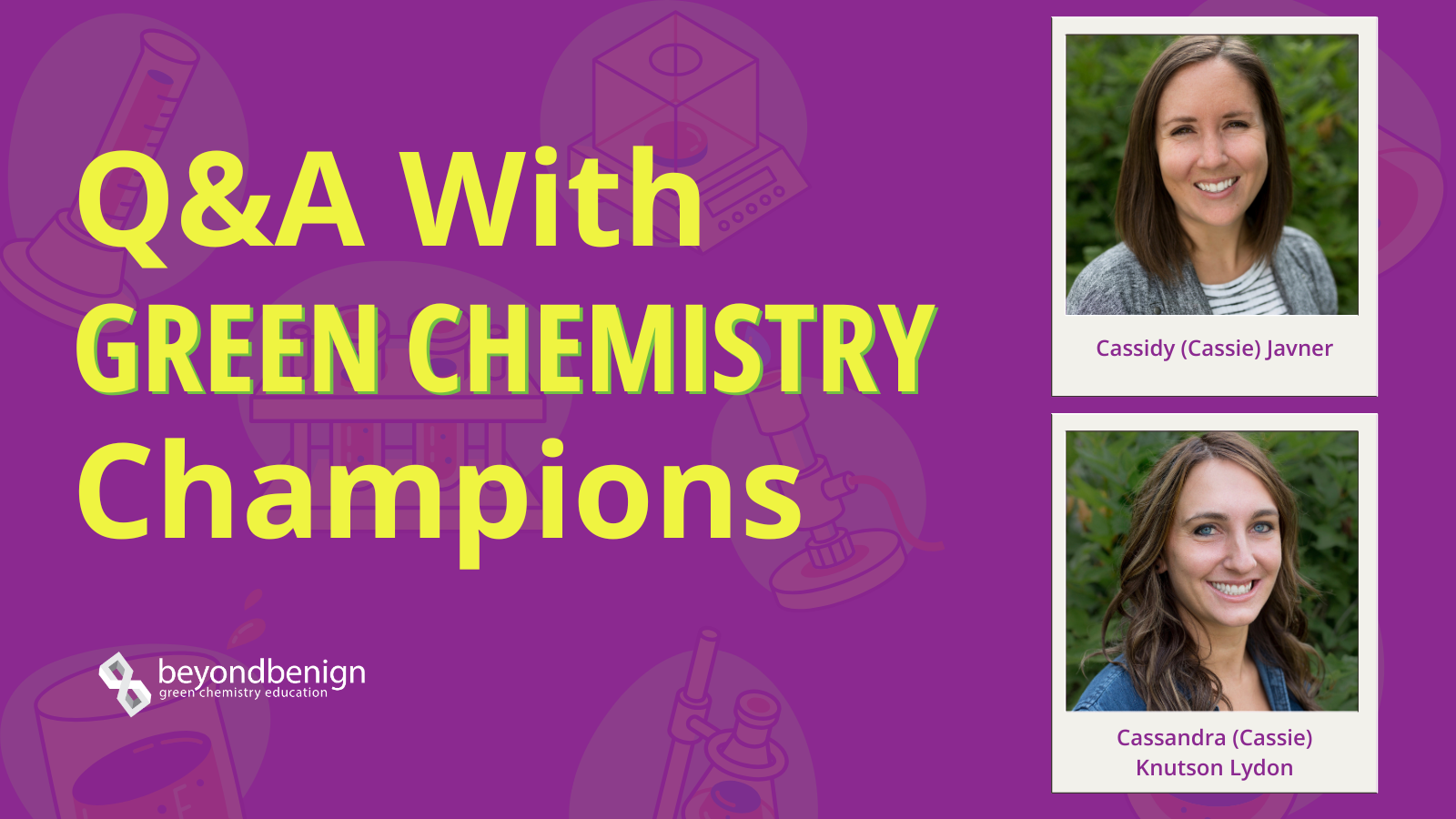 Two outstanding Minnesota chemistry teachers are proving that sustainability belongs in every classroom. Cassandra (Cassie) Knutson Lydon, who has taught general and AP chemistry at White Bear Lake High School since 2009, and Cassidy (Cassie) Javner, a chemistry teacher at Richfield High School, have been longtime collaborators—first connecting when Javner was Lydon’s student teacher.
Two outstanding Minnesota chemistry teachers are proving that sustainability belongs in every classroom. Cassandra (Cassie) Knutson Lydon, who has taught general and AP chemistry at White Bear Lake High School since 2009, and Cassidy (Cassie) Javner, a chemistry teacher at Richfield High School, have been longtime collaborators—first connecting when Javner was Lydon’s student teacher.
Both are Beyond Benign Certified Lead Teachers, and together they’ve developed curricula, led workshops, and trained other educators across the country. Their passion extends beyond their own classrooms: from publishing in journals to presenting at national conferences, they are committed to showing how chemistry can be a force for good and an entry point to solving global challenges.
In this conversation, they share their journeys into green chemistry, the classroom experiments that spark the most excitement, strategies for helping busy teachers get started, and the opportunities they see ahead for making science more sustainable and relevant to students’ lives.
Beyond Benign: To get started, could you each share a little about your path into green chemistry education and the Lead Teacher Program?
Cassie J.: I first met Cassie when I was her student teacher back in 2013. She helped me learn how to teach chemistry, and that’s where our paths first crossed.
Cassie L.: Around that time, I was coordinating the Research Experience for Teachers (RET) program at the University of Minnesota. While teaching AP Chemistry, I came across the concept of atom economy. That led me to connect with faculty doing green chemistry work and eventually with Jane Wissinger.
Cassie J.: Together, we joined Jane’s lab to develop polymeric medical sutures from renewable materials. She encouraged us to take Beyond Benign’s online Introduction to Green Chemistry course, and soon after, we became Lead Teachers. From there, we began presenting, developing experiments, and eventually teaching Beyond Benign’s online course ourselves.
Cassie L.: Even in retirement, Jane still co-leads our annual three-day summer workshop at the University of Minnesota. This past year marked our seventh, and we’ve even run virtual versions during COVID. We’re grateful to still collaborate with her regularly.
Beyond Benign: Thinking about this past year, what green chemistry teaching or outreach experiences stand out most for each of you?
Cassie L.: Each year, I run the “Make It, Break It” experiment, and it’s always a highlight. It helps students connect to real-world challenges and see how science can be part of solutions. Not everyone will become a chemist, but it’s important for them to understand why these issues matter. That experiment makes those connections clear, which is why it remains one of my favorites.
Cassie J.: We both work to bring green chemistry principles and the UN Sustainable Development Goals into our classrooms. My units are themed around sustainability goals, which makes learning more relevant and helps students see career opportunities they didn’t know existed.
On the outreach side, I love teaching Beyond Benign’s introductory course. It’s rewarding to share ideas with educators who share our vision. Cassie and I also presented the “Make It, Break It” experiment at ChemEd this summer, which was a great way to highlight sustainability and green chemistry. My students love it too—we just made the bioplastics on Friday, and it was a fun way to kick off the year.
Cassie L.: I’ll add that through the RET program this summer, I worked in a completely new area for me—passive daytime radiative cooling. We explored how to cool buildings or people without air conditioning, looking at innovations like fabrics and paints. It was exciting to branch out beyond polymers, and I’m eager to bring this work into my classroom this spring.
Beyond Benign: K-12 educators are extremely busy. What strategies have you found most effective in helping them get started with green chemistry or deepen their practice?
Cassie J.: Start small. The easiest way in is swapping out a single lab for a safer, greener version. Once teachers build comfort and knowledge, they can add more over time. It doesn’t have to happen overnight, and trying to do it all at once often leads to burnout. I encourage people to think in one-, two-, or even five-year timelines for making changes.
Cassie L.: There’s an upfront investment in planning and trying something new, but the payoff is big. Students are more engaged, excited, and interested, which makes teaching flow more smoothly. It’s like an activation barrier in chemistry—once you put in the energy to get started, the results are worth it.
Beyond Benign: What Beyond Benign resources do you rely on most in your classrooms? And have you created or contributed any that you’re particularly proud of?
Cassie L.: I started with Beyond Benign’s replacement experiments, and many are still in my classroom—the types of reactions lab was an easy entry point. I’m especially proud of the “Make It, Break It” experiment, which is published on the Green Chemistry Teaching and Learning Community (GCTLC), and of the work Cassie and I have shared through the Journal of Chemical Education and book chapters. And as a personal point of pride, I co-chaired one of the committees that developed the GCTLC, which has been one of my biggest contributions.
Cassie J.: We’ve refined and adapted some experiments, sometimes adding an AP Chemistry lens, but most of the core materials came from Beyond Benign. I also use the types of reactions lab, and another favorite is the colored flame candles experiment. It replaces the methanol flame test, which has a history of accidents, with a safe, engaging alternative where students investigate substances through flame colors. They love it, and it’s much safer.
Beyond Benign: It would have been easy to stop at bringing green chemistry into your own classrooms. But instead, you’ve gone further—sharing, training, and doing advocacy work on top of your teaching. How did you make the decision to take that extra step?
Cassie J.: For me, it comes from how much I gain by sharing and talking with other educators. When Cassie and I exchange resources and ideas, we both grow in our practice. Our partnership has been incredibly valuable in developing materials for students and teachers.
I’m also motivated by wanting to spread the message that chemistry can be used for good. I enjoy talking to people about that. Professionally, the opportunities through Beyond Benign and the University of Minnesota have been amazing—from publishing in journals to attending conferences I never imagined going to. It’s rewarding in both directions: Sharing helps others, and it also pushes me to grow as an educator.
Cassie L.: I’d echo that. For me, it’s really a symbiotic relationship. I’ve always been passionate about teaching, so things like hosting student teachers—which is how I first met Cassie—and contributing to the profession have always energized me.
At the same time, I’ve gained so much personally and professionally. I’ve traveled to different states, presented at conferences, and had experiences I never would have sought out on my own. Those opportunities came through support from Beyond Benign and the University of Minnesota. That keeps me motivated—I give a lot, but I also get a lot in return.
Beyond Benign: What’s next for each of you? What are you most excited about in the coming year or two, whether in sustainable chemistry, STEM education, or personally?
Cassie L.: I’m really excited about a new class I’ll be teaching called Planet Earth and Climate. I had proposed a sustainability class, but enrollment was too low to run it. This course overlaps with what I wanted to teach, so I’m approaching it through a sustainability lens.
We’ll also be piloting the passive daytime radiative cooling experiment I mentioned earlier this spring. And Jane is coming back into my classroom! She wants to work on the PLA/oil spill experiment we worked on together a while back. I’ve been using part of that procedure in my cooling experiment, and after talking with her this summer, she decided she’d like to return to it and see if we can get to a publication.
I’ll have two weeks of experts from the University of Minnesota in my classroom, teaching about polymers and sustainability. I think it’s so cool to show students how materials can be used in completely different ways—like using PLA for oil spill cleanup in one project and for radiative cooling in another. It gives them a glimpse of the wide range of jobs and sectors doing this kind of work.
Cassie J.: I’m currently in a graduate certificate program in engineering education, so I’m excited to bring in more engineering challenges centered on sustainability. Last year my students built electric vehicles for the first time, and I want to keep merging green chemistry, sustainability, and engineering so classes stay hands-on and engaging.
Cassie and I also plan to continue spreading the word at conferences. We’re looking at opportunities with the University of Minnesota and elsewhere.
Cassie L.: Yes—we’ve been invited to present the “Make It, Break It” polymers experiment at ACS this spring, and I’ll be presenting a Climate Action Project at NSTA in November. We’re not sure yet if ACS travel funding will come through, but I know opportunities will keep coming. And honestly, I just love working with Cassie.
Cassie J.: I love working with you, too!
Beyond Benign: You’re both doing such inspiring work. Is there anything I didn’t ask that you’d want people to know?
Cassie J.: I’d just say thank you to Beyond Benign. They’ve supported us so much—funding, opportunities, encouragement. We really couldn’t do a lot of this work without them. And the University of Minnesota, too. Both organizations have been key.
Cassie L.: Absolutely. Between the two, we’ve had classroom supplies, travel support, the chance to run workshops, and more. They’ve given us the platform to share this work, and it’s been invaluable.
How to get involved:
- Join the Green Chemistry Teaching and Learning Community (GCTLC) to connect with fellow educators and access free resources, including the “Make It and Break It” lesson contributed by Cassie Lydon, Cassie Javner, and Jane Wissinger.
- Subscribe to Beyond Benign’s newsletter to receive green chemistry news and opportunities directly to your inbox. Plus, be the first to know about professional development opportunities for K-12 educators!
- Register for the free Green Chemistry Connections webinar series to hear from green chemistry changemakers and connect with the community at each monthly session.

Inside the Classroom: Two Educators on the Value of Teaching Green Chemistry to High School Students and Their Teaching Communities
September 23, 2025
Two outstanding Minnesota chemistry teachers are proving that sustainability belongs in every classroom. Cassandra (Cassie) Knutson Lydon, who has taught general and AP chemistry at White Bear Lake High School […]
Categories:
Meet the Beyond Benign Team: A Video Q&A With Dr. Juliana Vidal
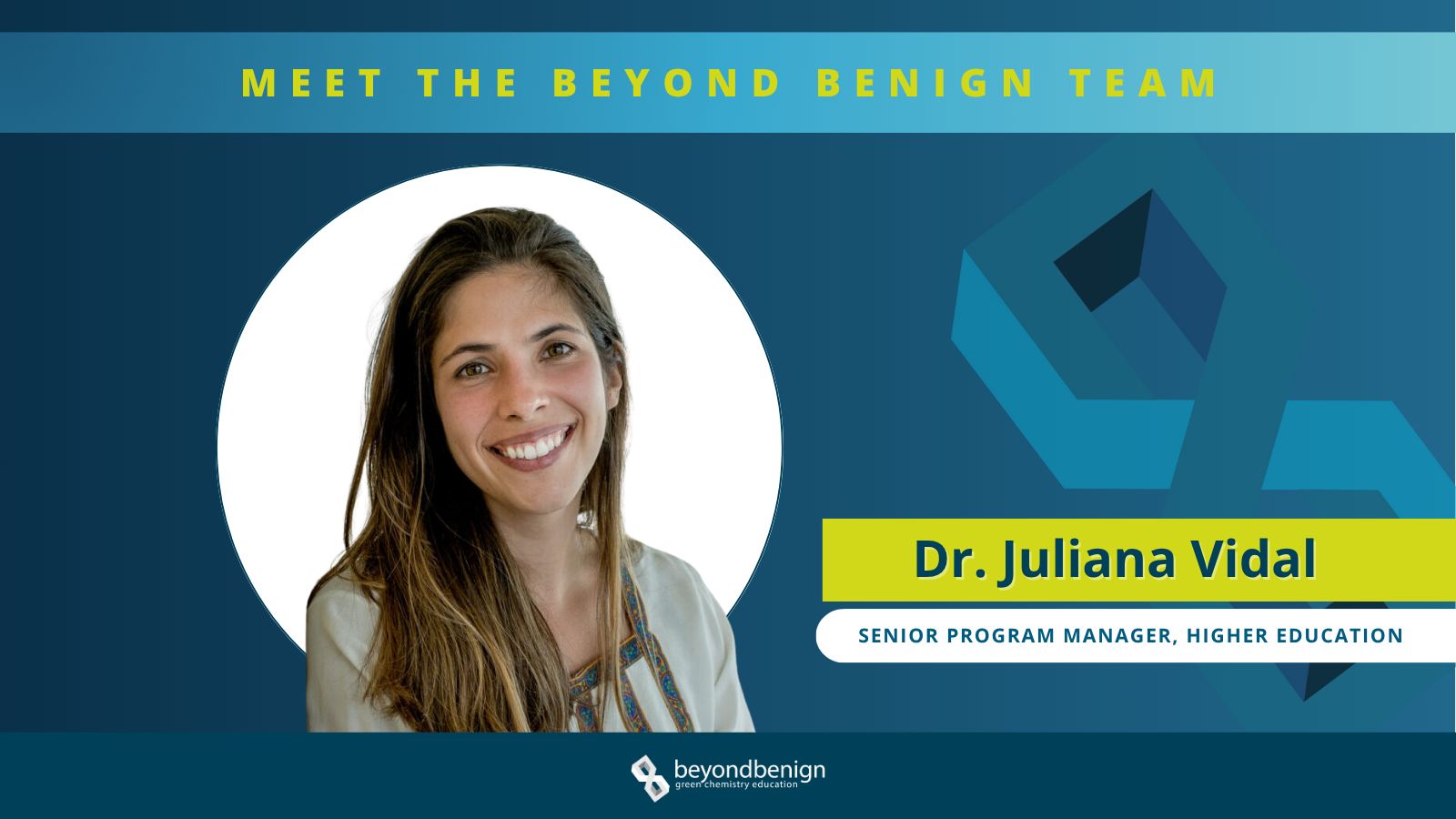 With a Ph.D. in green chemistry and experience leading global sustainability initiatives, Dr. Juliana Vidal has dedicated her career to showing the world that chemistry can be a force for good. At Beyond Benign, she collaborates closely with higher education institutions through the Green Chemistry Commitment (GCC) program to integrate green chemistry into curricula, foster global collaboration, and empower the next generation of chemists to create safer, more sustainable solutions.
With a Ph.D. in green chemistry and experience leading global sustainability initiatives, Dr. Juliana Vidal has dedicated her career to showing the world that chemistry can be a force for good. At Beyond Benign, she collaborates closely with higher education institutions through the Green Chemistry Commitment (GCC) program to integrate green chemistry into curricula, foster global collaboration, and empower the next generation of chemists to create safer, more sustainable solutions.
In this conversation, Juliana shares how she found her path from lab-based research into education and advocacy, the global opportunities she sees for green chemistry, and the moments that remind her why this work matters.
Why She Believes Chemistry Deserves a Better Reputation
The Biggest Misconceptions About Green Chemistry—and How to Change Them
How Small Steps Can Transform a Chemistry Classroom
A Brazilian University’s Bold Move After Signing the GCC
Her Vision for the Next Era of Green Chemistry Education
Lightning Round: Mentos, Pokémon, Buffy, and a Whole Lot of Cheese
How you can get involved:
- Keep up with Juliana and her work by connecting with her in the GCTLC!
- Not yet part of the Green Chemistry Commitment (GCC)? Learn how your institution can become a signer and provide students with essential skills and training for today’s workforce.
- Already an active community member? Apply to become a Community Ambassador!

Meet the Beyond Benign Team: A Video Q&A With Dr. Juliana Vidal
August 18, 2025
With a Ph.D. in green chemistry and experience leading global sustainability initiatives, Dr. Juliana Vidal has dedicated her career to showing the world that chemistry can be a force for […]
Categories:
6 Essential Higher-Ed Green Chemistry Resources for the 2025-2026 Academic Year
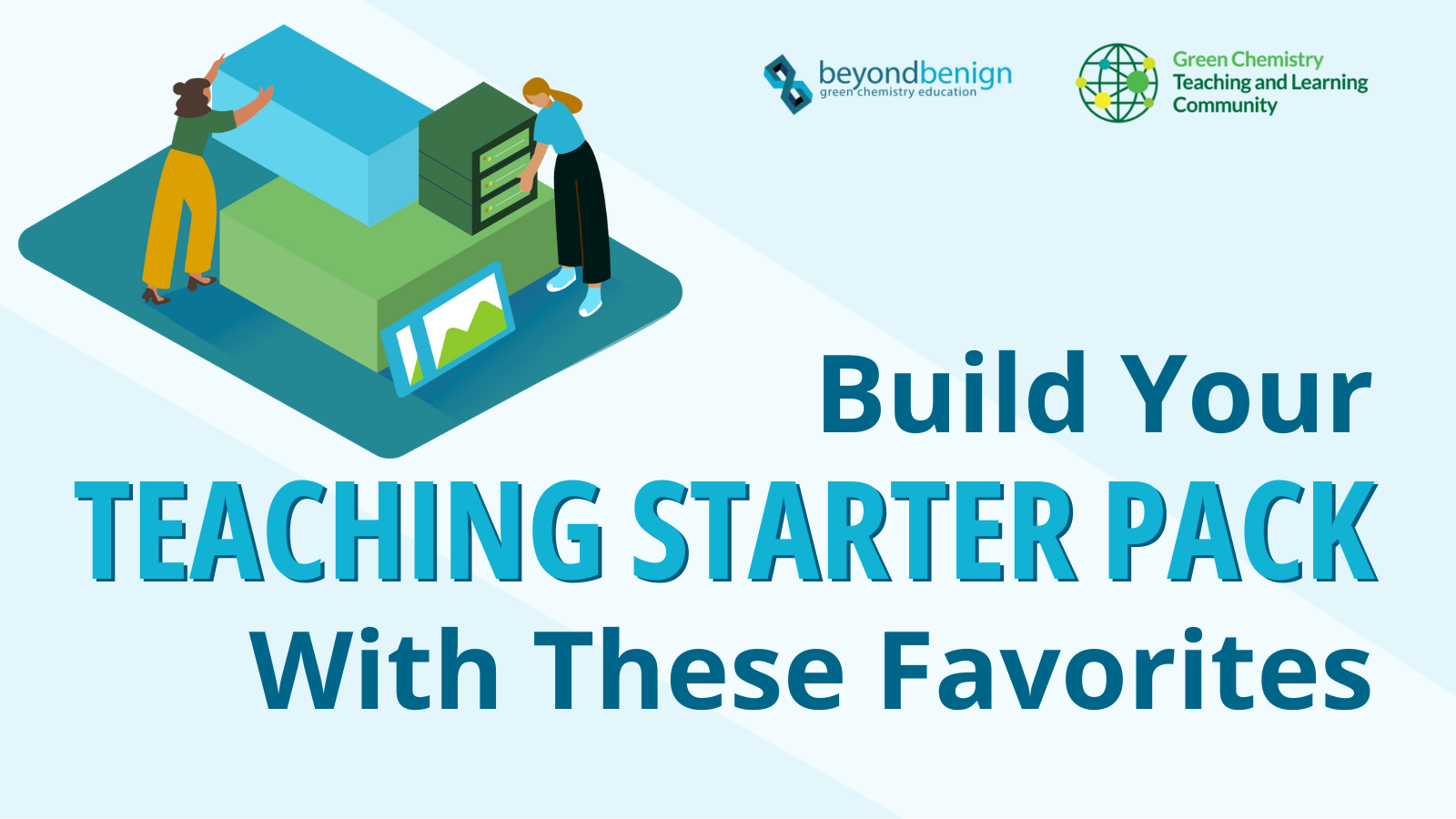 New year, new students, new lab goggles… and some of the best green chemistry education tools out there.
New year, new students, new lab goggles… and some of the best green chemistry education tools out there.
To kick off the 2025–2026 academic year, we’re sharing a curated collection of green chemistry resources from the Green Chemistry Teaching and Learning Community (GCTLC) written by educators, for educators! Some are widely used and educator-approved; others are newly developed tools we’re especially excited to spotlight this fall. What they all have in common: they’re freely available, classroom-tested, and modular, making it easy for instructors to adapt them or use them as-is, lowering the barrier to bringing green chemistry into any course.
These resources are specifically designed for higher education faculty teaching general chemistry, green chemistry, toxicology, and related courses. Whether you’re building a new course, refreshing a lecture or a lab, or looking for new ways to make chemistry feel more relevant, these resources offer tangible, flexible ways to bring green chemistry into focus this year.
1. Help Students Build Real-World Hazard Assessment Skills
Resource: Use of ChemFORWARD for Chemical Hazard Evaluation and Assessment in Academic Settings
Best for: Introductory–advanced undergraduate courses in green chemistry, general chemistry, or cosmetic science
Green chemistry isn’t just about understanding sustainability in theory; it’s about equipping students with the tools they’ll need in the lab, in research, and across industry. That’s the thinking behind this hands-on module developed by Beyond Benign and ChemFORWARD. It trains students to use the ChemFORWARD platform—a chemical hazard database—to identify chemical hazards, avoid regrettable substitutions, and choose safer alternatives.
The module includes lecture slides, implementation guidance, and plug-and-play assignments that can be used as standalone activities or built into an existing course. Faculty who teach at Green Chemistry Commitment (GCC) institutions can request temporary access to the ChemFORWARD database for use in their classroom, making this a truly practical, professional-grade teaching tool.
🧪 Bonus: This resource was also featured in a Greener Curriculum Showcase Series session, where educators walked through the module and shared tips for classroom use. Watch the session here.
2. Show Students What Greener Innovation Looks Like in Industry
Resource: Exploring Sustainable Practices in Metal Plating: The Drive for Greener Innovations
Best for: General chemistry, organic chemistry, or environmental science courses at the undergraduate level
PFAS is a hot topic in environmental health, and this case study gives students a concrete example of how green chemistry can be used to solve real-world industrial problems. Developed in collaboration with the New York State Pollution Prevention Institute (NYSP2I), this six-lesson module walks through how one New York metal plating company worked with regulators and scientists to eliminate a PFAS-based fume suppressant, replacing it with a safer, greener alternative.
Instructors can use this case study to help students understand the science behind PFAS, the 12 Principles of Green Chemistry, and the business, health, and regulatory drivers behind chemical innovation. It also aligns with the American Chemical Society (ACS) Guidelines for Bachelor’s Programs requirement that case studies demonstrate “the interplay of chemical, environmental health, regulatory, and business considerations that dictate chemical processes and product design.” With ACS set to begin assessing for its green chemistry and sustainability requirements in 2026, this resource can be a timely way for ACS-accredited institutions to meet those expectations.
It’s also a valuable tool for showing how cross-sector collaboration plays a role in shifting industry practices.
3. Connect Chemistry to Environmental Justice and Community Impact
Resource: The Olin Chemical Superfund Site Case Study
Best for: Introductory college-level courses in general chemistry, toxicology, or sustainability
This case study centers on a Superfund site in Wilmington, Massachusetts — the Olin Chemical Superfund Site — where decades of toxic waste left a lasting legacy. Developed by Beyond Benign in partnership with the MIT Superfund Research Program, the four-lesson module introduces students to the U.S. Environmental Protection Agency’s Superfund Program, the chemistry behind hazardous substances, and the growing role of green chemistry in preventing future harm.
Students examine toxicology, pollution, and remediation, but the resource goes further, encouraging educators and students to create case studies based on Superfund sites in their own communities. It’s a compelling way to make chemistry personal, urgent, and connected to real lives and places.
🧪 Bonus: This resource was featured in a Greener Curriculum Showcase Series session, where educators shared implementation strategies and ideas for classroom adaptation. Watch the session here.
4. Bring Toxicology into Chemistry Without Reinventing Your Syllabus
Resource: Toxicology for Chemists Curriculum
Best for: Undergraduate courses in general chemistry, organic chemistry, environmental science, and green chemistry
Toxicology is a foundational part of designing safer chemicals; however, for many chemistry educators, it’s challenging to know where to start. That’s why Beyond Benign teamed up with educators, toxicologists, and industry experts to create this open-access curriculum. Designed to be modular and flexible, the Toxicology for Chemists series makes it easy to weave toxicology into your existing courses, whether through a single lecture or an entire unit.
The curriculum includes lecture slides, case studies, assignments, and in-class activities. Topics range from foundational concepts, such as hazard versus risk, to more advanced areas, including toxicokinetics, predictive toxicology, and environmental fate.
Explore the full curriculum on the GCTLC.
5. Build a Full-Semester Foundation in Green Chemistry
Resource: Green Chemistry University Course
Best for: Educators looking to introduce or revamp a full-semester undergraduate green chemistry course
Looking to go beyond modular lesson plans? This comprehensive 14-week course, developed by Beyond Benign and the Yale Center for Green Chemistry & Green Engineering, guides students through the fundamentals of green chemistry and its applications to global health and environmental challenges. Created through the Global Green Chemistry Initiative, the course includes a syllabus, lecture materials, and lab exercises.
It’s ideal for instructors seeking a well-structured entry point or upgrade for an existing general chemistry course.
6. Make Safer Solvent Choices Simple and Accessible
Resource: Beyond Benign Greener Solvent Guide
Best for: Undergraduate chemistry lab courses or any classroom working toward safer lab practices
This quick-reference guide from Beyond Benign synthesizes data from existing solvent selection guides into a single, visual format that’s easy to post in labs or add to course materials.
While not a full curriculum module, the Greener Solvent Guide is one of the most widely used tools in Beyond Benign’s teaching ecosystem. It helps students and instructors make more informed choices about solvents, reinforcing green chemistry principles in everyday lab work. Whether you’re starting conversations about safer solvents or embedding solvent selection into lab design, this tool offers a clear and accessible entry point.
🧪 Bonus: Educators often print and post the guide in labs — or even distribute it as a magnet — so students have constant access to safer alternatives.
How to get involved:
- If you haven’t yet joined the GCTLC, create your free profile today to access all of these resources and many more.
- Subscribe to Beyond Benign’s newsletter to get green chemistry news, resources, and inspiration delivered to your inbox monthly.
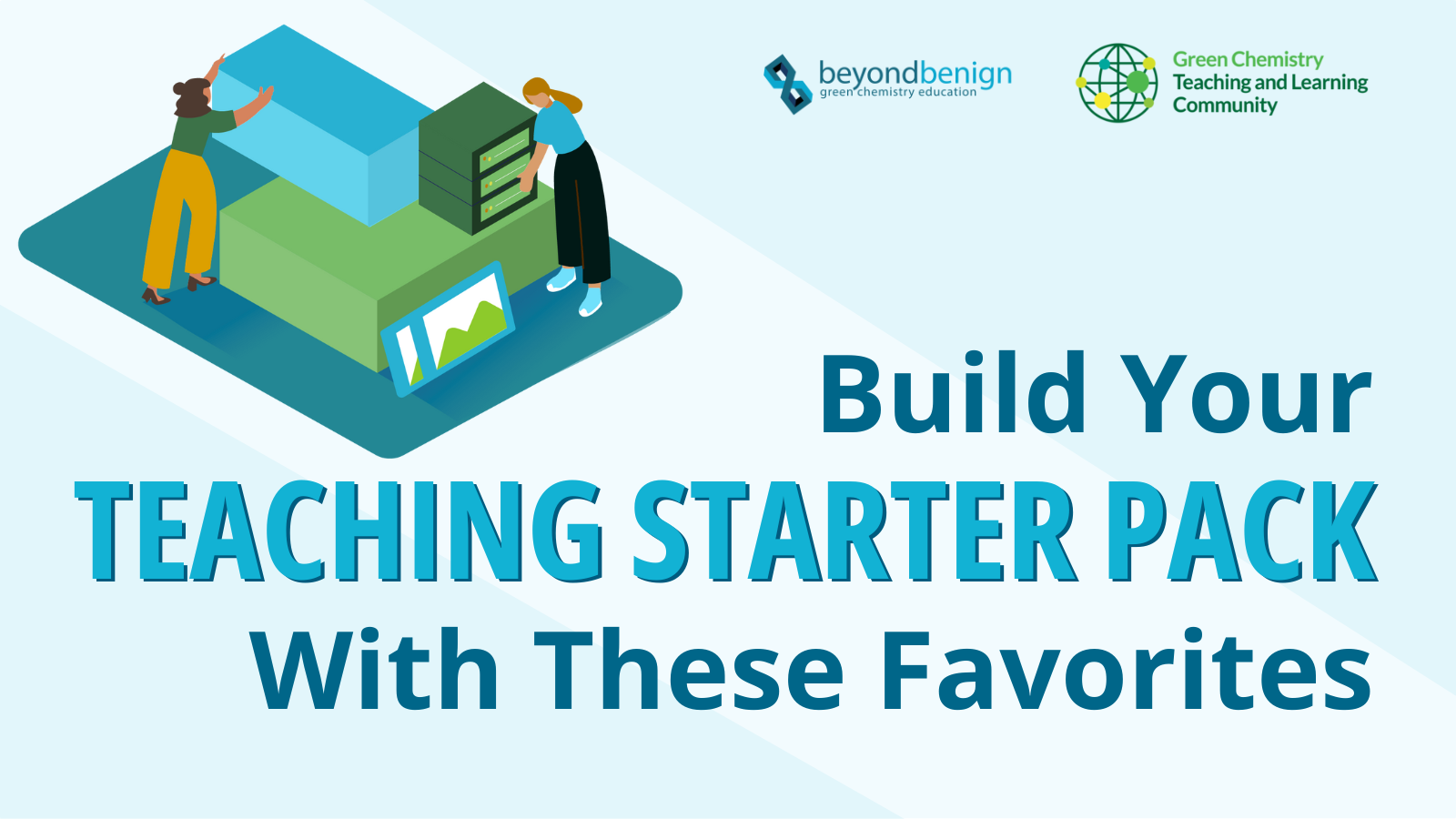
6 Essential Higher-Ed Green Chemistry Resources for the 2025-2026 Academic Year
August 18, 2025
New year, new students, new lab goggles… and some of the best green chemistry education tools out there. To kick off the 2025–2026 academic year, we’re sharing a curated collection […]
Categories:
A Growing Commitment: Reflections From the 2025 GCC Summit & Beyond
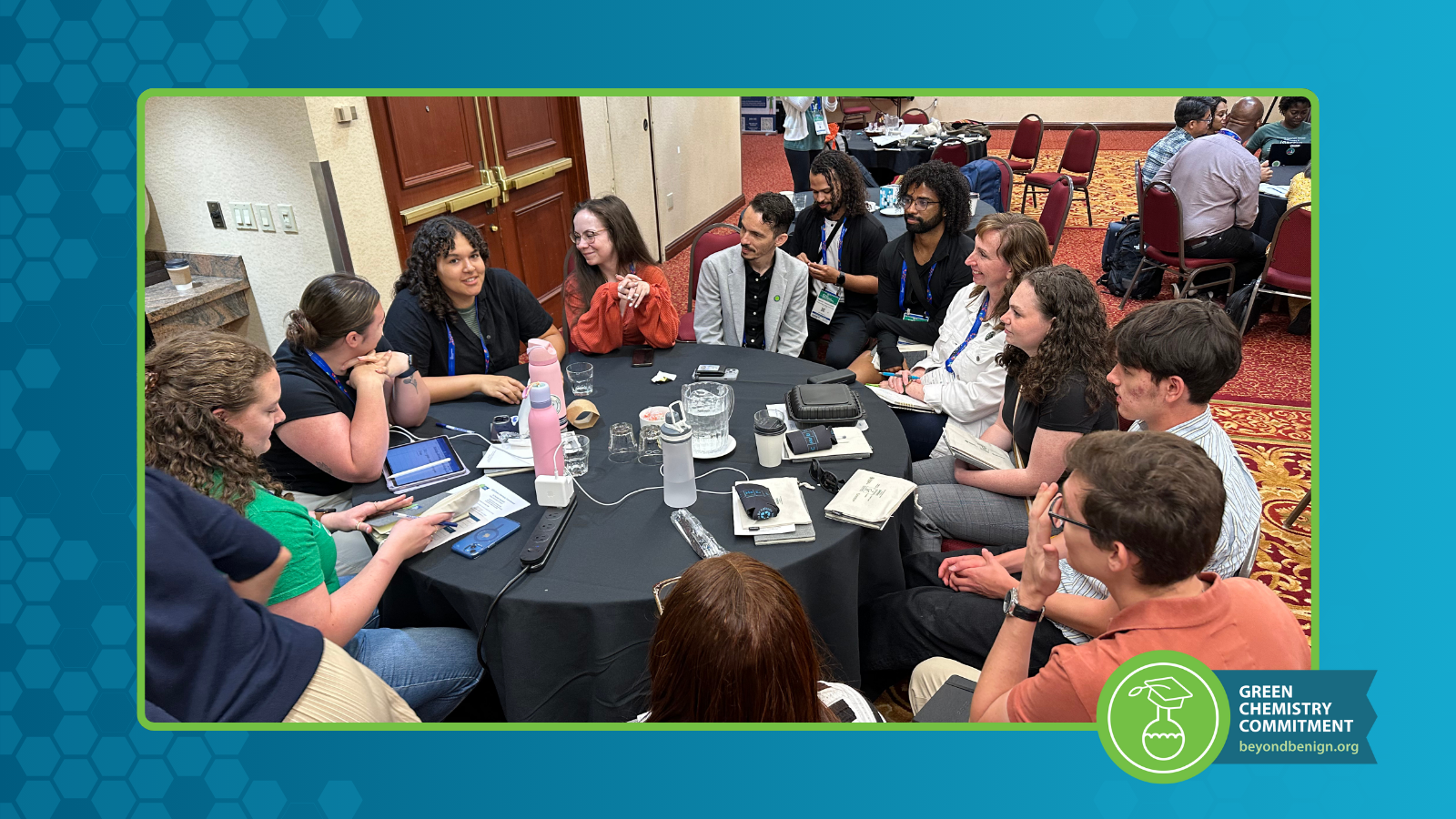 Each year, Beyond Benign’s Green Chemistry Commitment (GCC) Summit brings together a global community of educators and changemakers who are reimagining how chemistry is taught—and why it matters. The 2025 gatherings, held both virtually and in person, showcased the powerful momentum of this growing movement.
Each year, Beyond Benign’s Green Chemistry Commitment (GCC) Summit brings together a global community of educators and changemakers who are reimagining how chemistry is taught—and why it matters. The 2025 gatherings, held both virtually and in person, showcased the powerful momentum of this growing movement.
Celebrating the GCC Community
The 2025 GCC Summit embraced a hybrid format that reflected the expanding reach and adaptability of the community. More than 70 participants joined the virtual gathering on June 18, while over 60 attended the in-person event on June 22 at the Green Chemistry & Engineering Conference (GC&E) in Pittsburgh, Pennsylvania. Whether connecting via Zoom or sharing space in a conference room, participants came ready to exchange ideas, celebrate progress, and deepen the collaborative spirit that defines the GCC network.
The community-building didn’t stop there. On the evening of June 22, GCC members gathered for a Student-Faculty Social Event co-hosted with MilliporeSigma, the U.S. and Canada Life Science business of Merck KGaA, Darmstadt, Germany, and the American Chemical Society (ACS) Green Chemistry Institute. With trivia games, laughter, and new introductions, the event offered a relaxed space to connect across roles and campuses. A few days later, the Catalyzing Change in Chemistry Education Luncheon welcomed 119 attendees—including many faculty, several of whom were new to the GCC—for a candid and energizing conversation about embedding green chemistry more deeply in higher education.
Together, these events reflected the heart of the GCC: a vibrant international community united by a shared purpose. Whether joining from a screen or across a lunch table, participants walked away with new ideas, renewed energy, and the unmistakable sense that they’re part of something bigger.
GCC Summit Highlights: Key Conversations & Catalysts
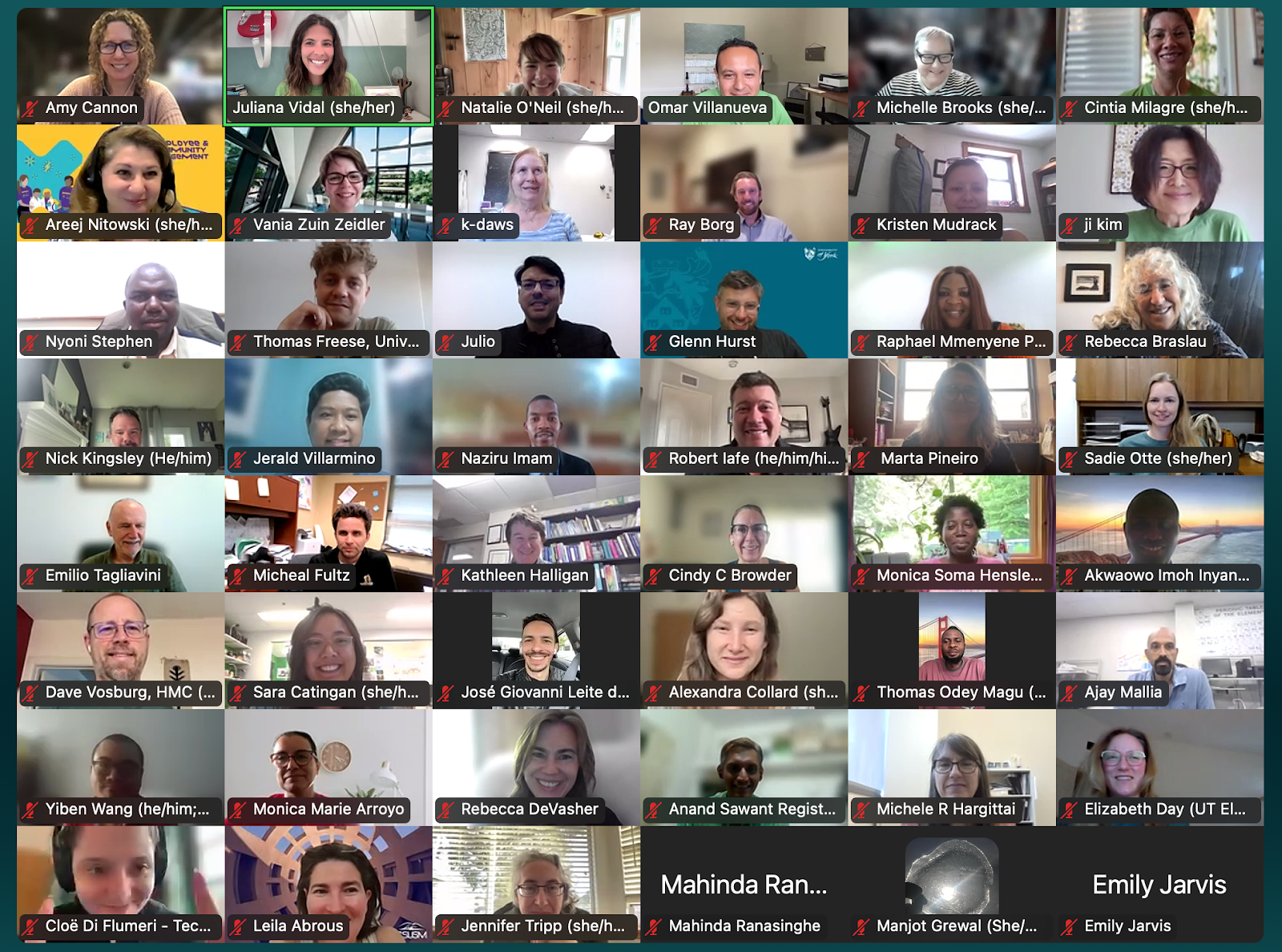
Participants from around the world gathered online for the 2025 Virtual GCC Summit.
Across two dynamic gatherings, the 2025 GCC Summit brought the community together to explore how green chemistry is taking root and scaling across higher education. Through keynotes, panels, and working sessions, a few themes rose to the top:
1. Aligning with Big Levers for Change
From updates to the ACS Guidelines to region-wide strategies emerging in Brazil, the Summit highlighted how professional societies and policy frameworks are shaping the future of green chemistry in academia. Speakers from the ACS and the Royal Society of Chemistry offered perspectives on how top-down influence can accelerate curriculum transformation and institutional adoption.
2. Making the Case for Green Chemistry in Industry
In panels featuring leaders from MilliporeSigma, Dow, Pfizer, and others, industry voices reinforced a powerful message: Green chemistry isn’t just good for the planet—it’s an essential skill set for today’s workforce. Participants heard how sustainability goals are influencing hiring decisions, innovation priorities, and cross-sector collaboration.
3. Stories of Progress from the GCC Network
Throughout both Summits, faculty and partner organizations shared candid stories of how they’re embedding green chemistry into coursework, labs, and departmental culture. Award-winning initiatives ranged from lab redesigns and final project integration to cross-campus partnerships that center student leadership. These case studies provided replicable models and inspiration for attendees to take back to their own institutions.
4. From Ideas to Action: Collaborative Planning
Both events featured hands-on working groups where participants tackled key challenges, like student engagement, faculty buy-in, lab sustainability, and professional development. Using a shared reflection and action planning framework, attendees left with goals, strategies, and new connections to help move the work forward on their campuses.
5. A Celebration of Community and Commitment
In both virtual and in-person formats, the GCC Summit served as a reminder that this work is never done alone. The tribute to Dr. Ed Brush, a longtime champion of green chemistry education, underscored the strength of the network and the deep personal commitment driving this movement.
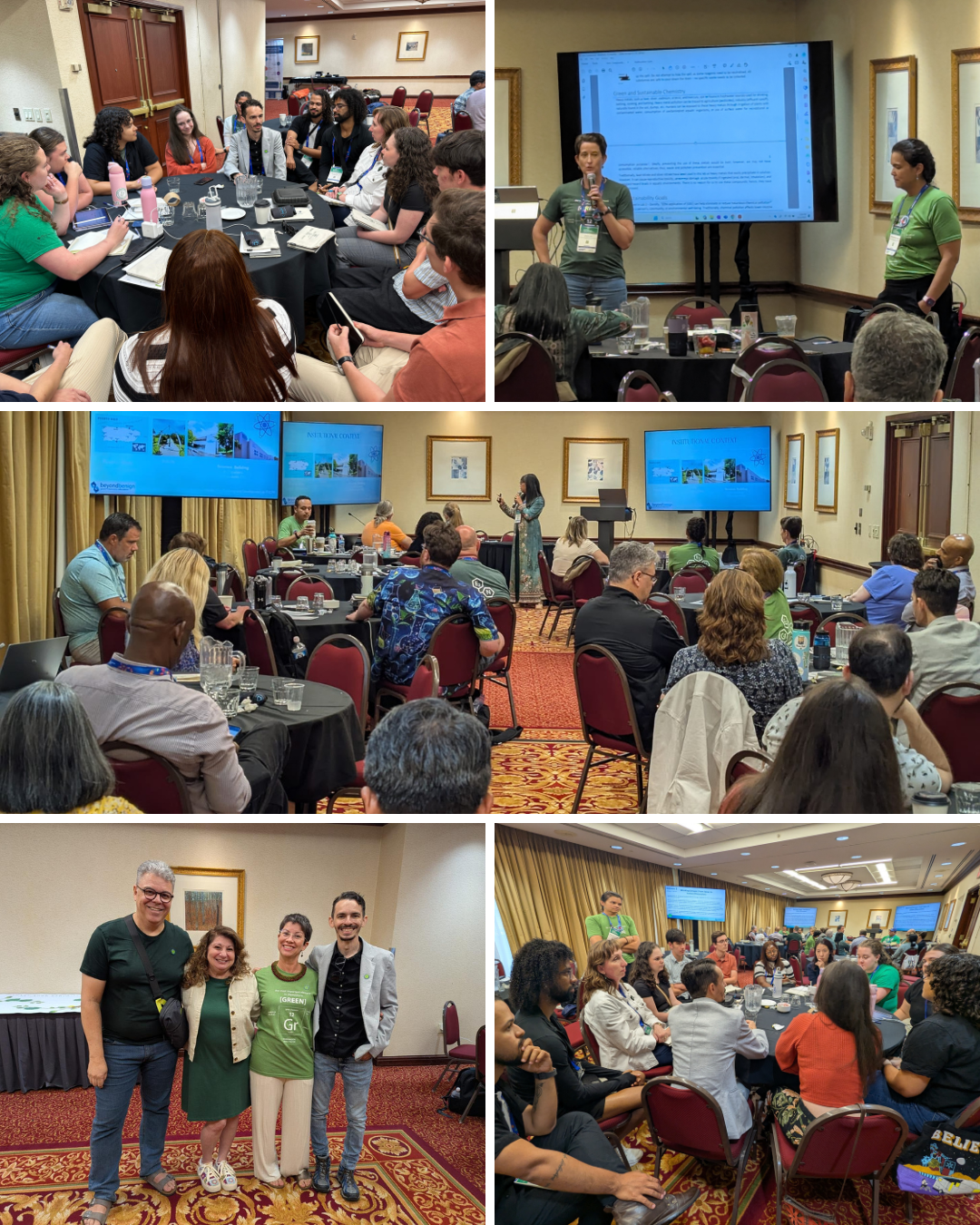
Snapshots from the in-person GCC Summit at the 2025 GC&E Conference, where participants shared ideas, strategies, and inspiration to advance green chemistry education.
Catalyzing Change: Insights from the Luncheon
While not formally part of the GCC Summit, the Catalyzing Change in Chemistry Education luncheon offered a powerful companion to the week’s events, especially for those new to the GCC. With more than 110 attendees, many of whom were just beginning to learn about the GCC, the luncheon created a space to explore what green chemistry integration can look like in practice and why it matters. Co-hosted with MilliporeSigma, the panel featured educators sharing candid reflections on institutional change, curriculum reform, and the power of community.
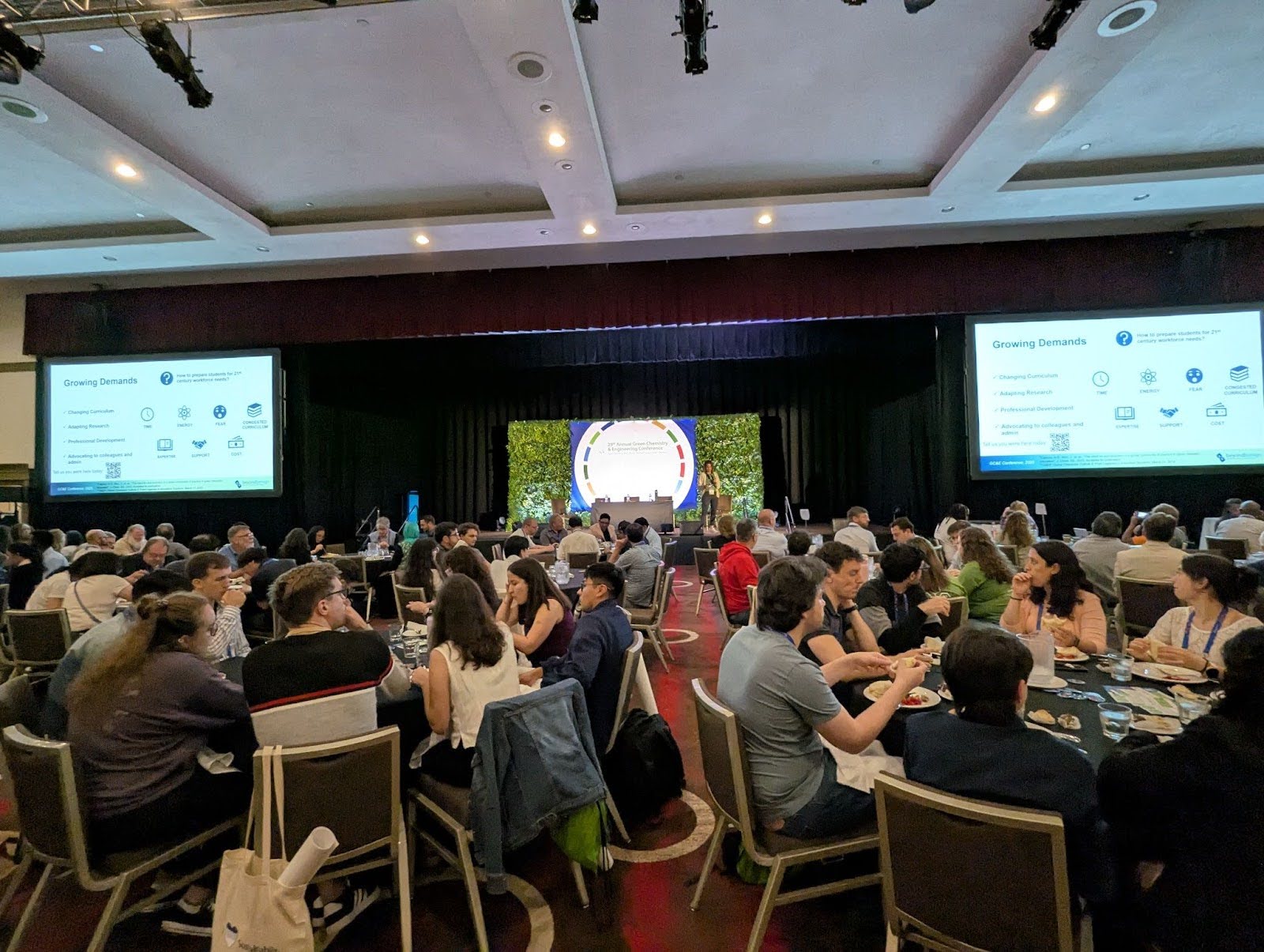
The Catalyzing Change in Chemistry Education luncheon brought together more than 100 faculty members—many new to the GCC—to explore what green chemistry can look like on their campuses.
Moderated by Amy Cannon (Executive Director, Beyond Benign) and Jeffrey Whitford (Vice President, Sustainability & Social Business Innovation, MilliporeSigma), the panel featured candid reflections on implementing green chemistry at the institutional level. Panelists included Prof. Glenn Hurst (University of York, UK), Prof. Loyd Bastin (Widener University, USA), and Prof. Flavia Zacconi (Pontificia Universidad Católica de Chile)—each sharing insights on building departmental buy-in, embedding green chemistry into curricula, and overcoming institutional barriers.
“The Green Chemistry Commitment was the catalyst that propelled green chemistry out of organic chemistry and into our curriculum. It also gave us goals for what we wanted to do in the future. So it gave us that framework about how we could scaffold green chemistry through the curriculum rather than it being part of the organic chemistry curriculum.” – Dr. Glenn Hurst, University of York
For many, the Commitment has helped unlock new partnerships and visibility. And perhaps most powerfully, it has provided a sense of shared purpose in what can sometimes feel like lonely institutional change work:
“This is the most important thing about the green chemistry commitment. For me personally, it has provided me with amazing networks that have led to many collaborations.” – Flavia Zacconi, Pontificia Universidad Catolica De Chile
Taken together, the insights shared at the luncheon underscored what many GCC members already know: Change happens faster and with greater impact when it’s grounded in both structure and community.
#GreenChemistryinAction: A Hashtag, A Movement
In conjunction with the 2025 Summit, Beyond Benign launched the #GreenChemInAction campaign to spotlight how members of the green chemistry community are advancing change in their own classrooms, labs, companies, and institutions. Participants from around the world shared reflections, visuals, and declarations of action, showcasing the depth and diversity of this growing movement.
The result was a vibrant, global snapshot of green chemistry in practice, filled with purpose, creativity, and momentum. You can still explore the campaign and see the community in action by browsing #GreenChemInAction on social media or visiting the GCTLC forum to view more posts.
Looking Ahead
As the GCC community continues to grow, so does the momentum for lasting change in chemistry education. Beyond Benign remains deeply committed to empowering educators, students, and institutions on this journey, whether they’re just beginning to explore green chemistry or already embedding it across their curriculum.
While plans for the next GCC Summit are already taking shape, the Green Chemistry Teaching and Learning Community (GCTLC) remains the best platform for staying connected between events. Through the GCTLC, members of the higher education community can find year-round opportunities for mentorship, collaboration, and resource sharing. With new functionality like topic-specific groups, it’s easier than ever to join conversations and build connections with others working toward similar goals.
For those interested in taking the next step by becoming a GCC signer, you can learn more about what’s involved—and how to get started—by visiting the GCC program page.
Together, this community is not just imagining a better future for chemistry education—it’s actively creating it.

A Growing Commitment: Reflections From the 2025 GCC Summit & Beyond
July 28, 2025
Each year, Beyond Benign’s Green Chemistry Commitment (GCC) Summit brings together a global community of educators and changemakers who are reimagining how chemistry is taught—and why it matters. The 2025 […]
Categories:
- 1
- 2
- 3
- …
- 19
- Next Page »
